Best places to visit Wales UK: The Ultimate Wales Travel Guide
My dream to explore Wales was due to several factors. Wales was my mum’s favourite country which she first saw in the 1940s during WWII when she was sent out of London in Operation Pied Piper to Wales to be protected from the bombs dropping on the city.
Taking the opportunity to visit Wales and take a Wales road trip, learning about the Welsh people and their Celtic history I became fascinated with Welsh history and in particular medieval Wales. Travelling the rugged coastline of Wales and taking in the breathtaking views is a dream come true for a slow traveller.
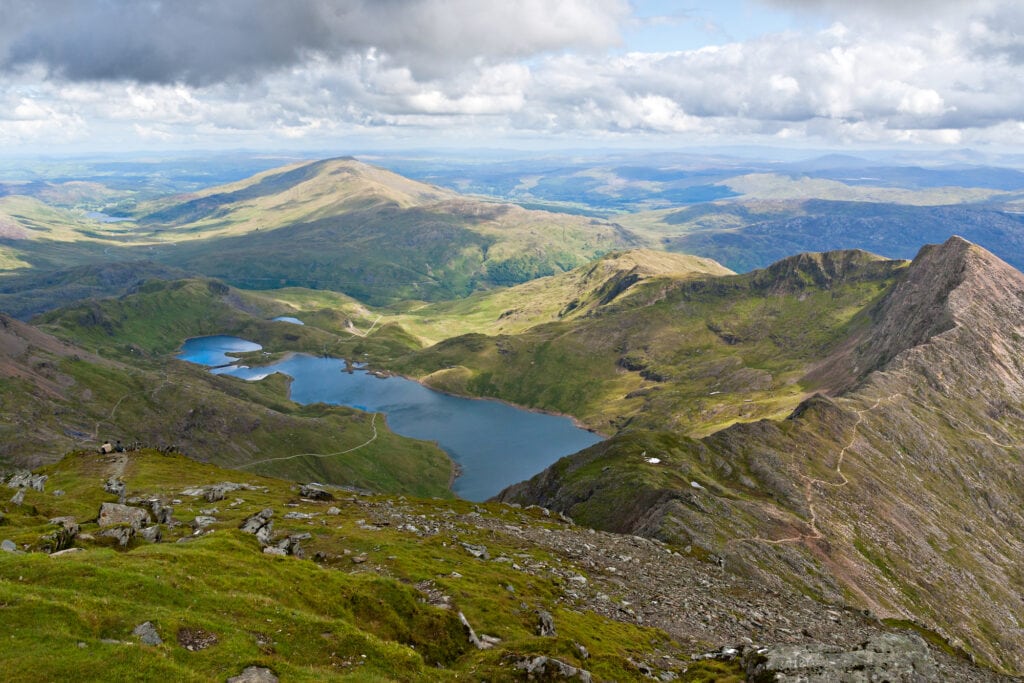
A friend introduced me to the Sharon Penman books, The Welsh Princes Trilogy—Here Be Dragons, Falls the Shadow, and The Reckoning—these are historical novels about a turbulent time in British history. These books gave me my travel inspiration and allowed me to see historic Wales through a Welsh state of mind.
Wales is a stark green and black land full of ruined castles, historic buildings, stunning mountains, and steep valleys with white dots of sheep herds. Welsh music and singing resonate across the valleys and of course, the symbol of Wales the red dragon flies over historic towns of Wales, castles, cities and villages full of history.
There are four UNESCO World Heritage sites in Wales, the Slate Landscape of Northwest Wales is made up of six sites around the county of Gwynedd that are all relics of the slate industry, which, in the 19th century, dominated this region of the country.
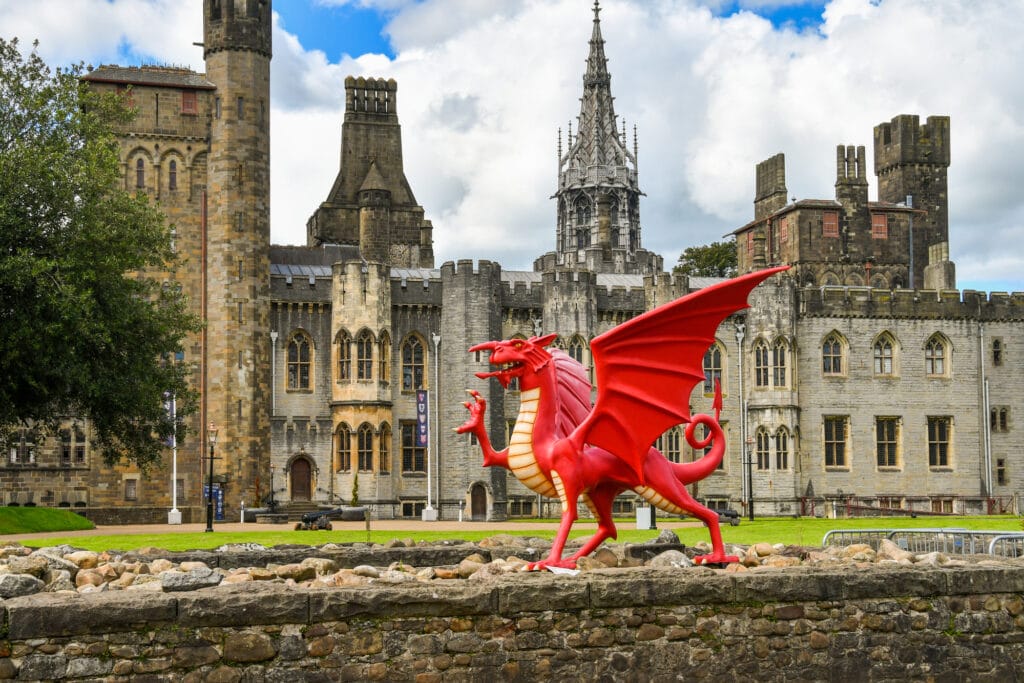
Wales Travel Guide
Wales, a country with stunning landscapes, rich history, and vibrant culture, offers an unforgettable travel experience. Located in the southwest part of the United Kingdom, this small nation is often overlooked by tourists, overshadowed by its bigger and more famous neighbors, England and Scotland. However, those who venture to Wales are rewarded with breathtaking natural beauty, charming towns, and fascinating historical sites.
There are 3 National Parks in Wales: Snowdonia, Brecon Beacons and Pembrokeshire Coastal. They all offer very different activities and are located about a couple of hours from each other. One of the highlights of a visit to Wales is its dramatic coastline. With over 1,200 kilometers of pristine shores, Wales boasts some of the most beautiful beaches in the UK, perfect for sunbathing, swimming, or simply enjoying a relaxing walk by the sea. For outdoor enthusiasts, Snowdonia National Park is a must-visit destination. Nestled in the heart of the country, the park offers majestic mountains, stunning lakes, and exhilarating hiking trails.
Wales is also renowned for its rich medieval heritage. Castles are a common sight in many Welsh towns and cities, each with its own unique stories to tell. Cardiff Castle, Conwy Castle, and Caernarfon Castle are among the most popular ones, showcasing the country’s fascinating history and architectural wonders. Wales has more castles per square mile than anywhere else in the world.
The quartet of castles built by Edward I during his long-lasting invasion of Wales are some of the finest, and best-preserved examples of medieval military architecture in the UK. The four strongholds, namely Conwy Castle in the county of Conwy, Harlech Castle and Caernarfon Castle in Gwynedd, and Beaumaris Castle on the island of Anglesey.
Nicknamed the ‘stream in the sky’, the 307 metre-long Pontcysyllte Aqueduct carries narrowboats on a slender runnel of water some 38 metres (126ft) above the River Dee. With its 19 symmetrical metal arches and lockless design. And the South Wales hub for coal mining and iron production in the Blaenavon industrial landscape. Most of the infrastructure from this period has long disappeared, but the preserved buildings and industrial machinery in the former mining town of Blaenavon, stand as a monument to this important chapter in recent Welsh history.
How to get to Wales: travel information
Cardiff Airport sits just on the outskirts of the city and boasts convenient bus and rail connections to not only the city center but also various parts of South Wales. A flight of approximately 80 minutes will transport you to key European hubs like Amsterdam and Paris, while domestic travelers can enjoy frequent services to destinations such as Newcastle, Edinburgh, Glasgow, Aberdeen, and Belfast.
While Cardiff Airport stands as the largest airport in Wales, the nation remains easily accessible from nearby English airports. Liverpool John Lennon Airport and Manchester Airport, both strategically located, serve as excellent gateways for North Wales, with Liverpool merely around 40 miles or 60 kilometers away from Wrexham. For example to get to Llandudno or Conwy from Manchester airport is only an hour and a half drive.
There are three primary motorway connections linking Wales and England. The M4 serves as the vital highway connecting London to South Wales, extending all the way to Pont Abraham in Carmarthenshire, West Wales. As you venture into Wales, your journey will take you across one of the two magnificent Severn Bridges.
Air Travel for North Americans – you would have to fly into either London, Liverpool or Manchester Airports and then choose you method of travel from them to Wales.
The South Wales Main Line connects the trains from London to Newport, Cardiff, Swansea and other destinations in South and West Wales. On direct trains, the journey time between London Paddington and Cardiff is a little under two hours. From London Euston Station, trains run across Mid Wales to Aberystwyth and up to the Llŷn Peninsula. There are also several trains that run to North Wales, stopping in the cities of Llandudno, Conwy, Bangor and Holyhead on the island of Anglesey. Check out the website Transport for Wales if you need more assistance.
Ferry services operate between the west coast of Wales and the Republic of Ireland across the Irish Sea (Fishguard or Pembroke to Rosslare, and Holyhead to Dublin). The frequency of the services means it’s easy to combine a stay in Wales with a quick jaunt over to Ireland, and the quickest ferries make the crossing in just two hours.
Wales has six ports that accept cruise ships, offering a range of services and facilities: Newport, Cardiff and Swansea in the Bristol Channel; Fishguard and Milford Haven in West Wales; and Holyhead on the island of Anglesey.
Xyuandbeyond is reader-supported. When you buy through links on our site, we may earn an affiliate commission. You can read my privacy policy here.
23 Historic Towns in Wales You Should Visit
During the reign of Edward I of England (1272–1307), a series of castles were constructed in Wales with the purpose of subduing the population and establishing English colonies in Wales.
This UNESCO World Heritage site includes Beaumaris, Caernarfon, Conwy, and Harlech. These castles of Edward I are considered the pinnacle of military architecture by historians.
Beaumaris
Beaumaris on the Isle of Anglesey which is French for fair Marsh is part of the UNESCO heritage site that includes Beaumaris Castle. Anglesey lies on the North Welsh coast.
Built by Edward I this castle was to be his crowning glory but it was never finished. The castle featured the best of medieval defensive designs with its round towers, inner and outer circuit walls, massive towered gates and a fortified dock. Beaumaris Castle is considered one of the finest surviving examples of a concentric medieval castle.
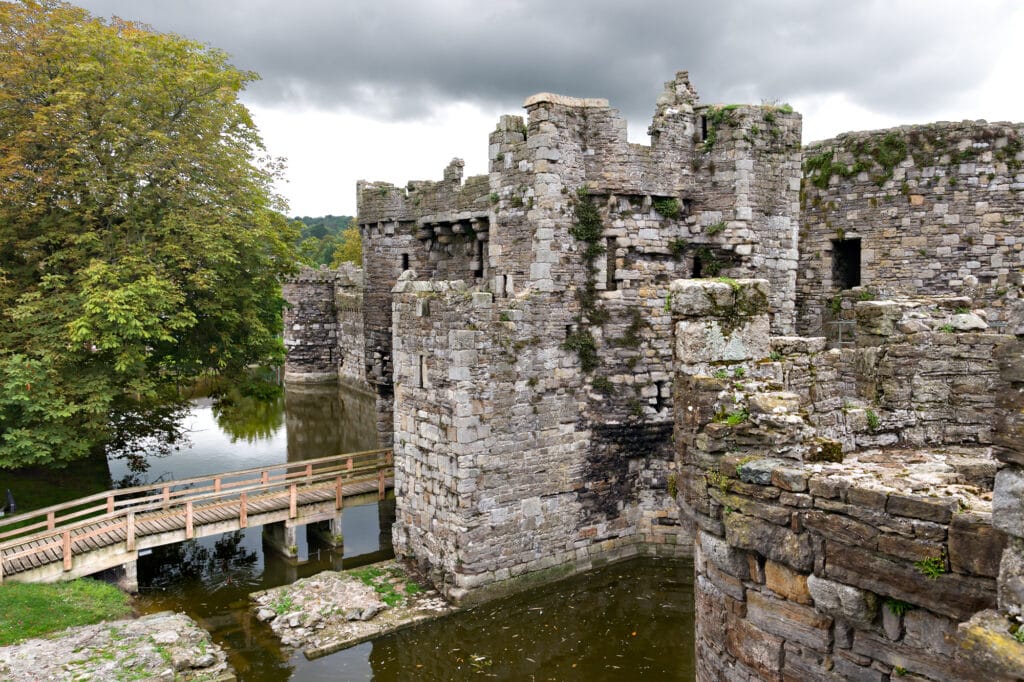
In the 14th century St Mary and St Nicholas Church you will find the stone coffin of Princess Siwan or Joan as she was known in English. She was the illegitimate daughter of King John and the wife of Llywelyn The Great, Prince of Gwynedd. Sadly after the Dissolution of the Monasteries, her tomb was used as a horse trough but has now been restored.
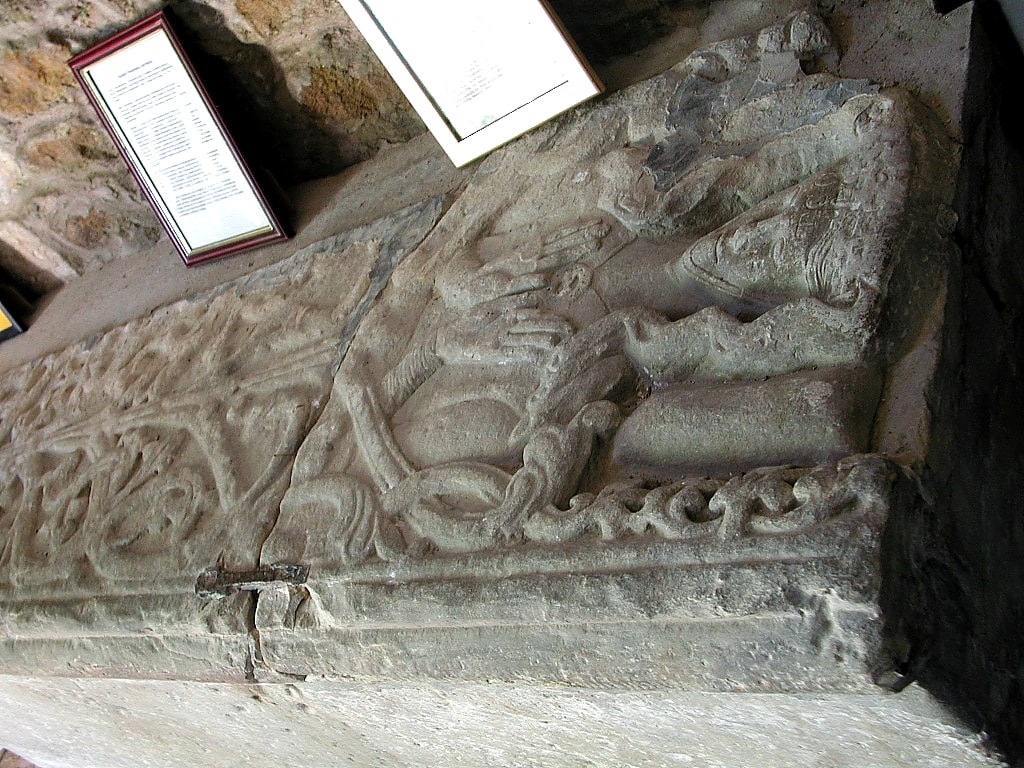
In Beaumaris, you can also visit the Beaumaris Gaol a Victorian prison, walk along the beach and enjoy the beauty of the Strait. Take a moment to visit the gardens of Plas Newydd and the ‘Hidden Gardens at Cadnant’ are simply stunning.
Castell Coch
Castell Coch, or the ‘Red Castle’, is set in the ancient beech woods of Fforest Fawr and rises from the forest like a fairytale castle. Built by the Marquess of Bute this incredible castle is a masterpiece of the High Victorian era.
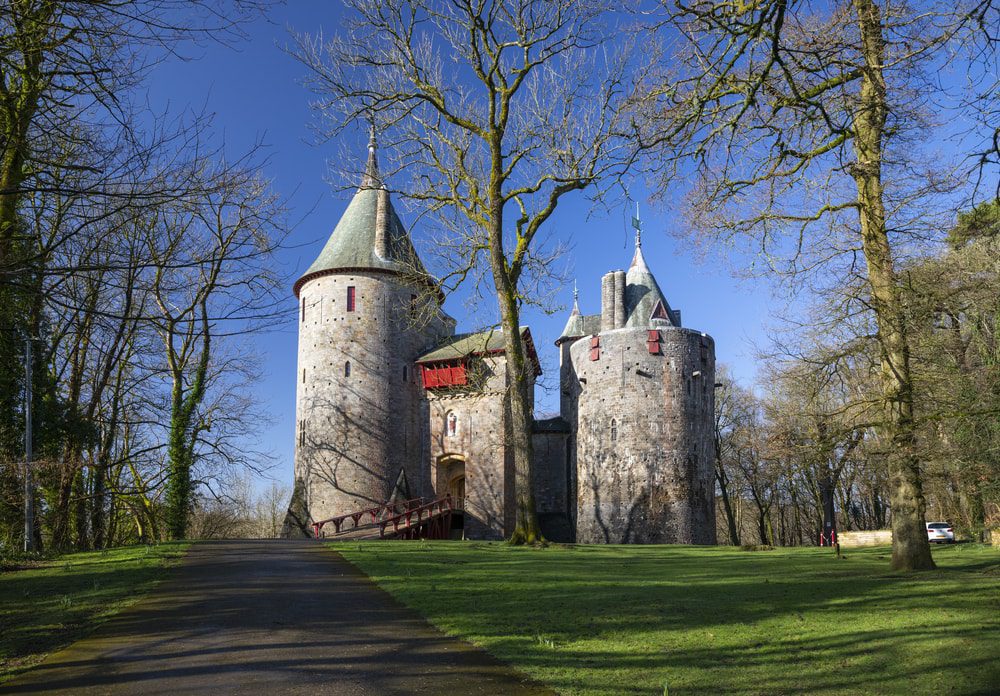
But it’s no exotic folly. Underneath the faux medieval trappings are the remains of a 13th-century castle, once used as a hunting lodge by the ruthless Marcher lord Gilbert de Clare.
Tintern Abbey
The Wye Valley straddles the border of Wales and England and is an area of outstanding natural beauty. Tintern Abbey sits on the Wye River just south of Monmouth and Chepstow Castle. The Cistercian Abbey of Tintern is one of the greatest monastic ruins of Wales. it was founded by Walter de Clare Lord of Chepstow and it was the second Cistercian monastery in Britain and the first in Wales. Until its dissolution in 1536, it was an extremely prosperous Abbey and due to its location during the middle ages, it suffered very little in the Welsh uprisings and the battles to bring the Welsh into the control of the English.
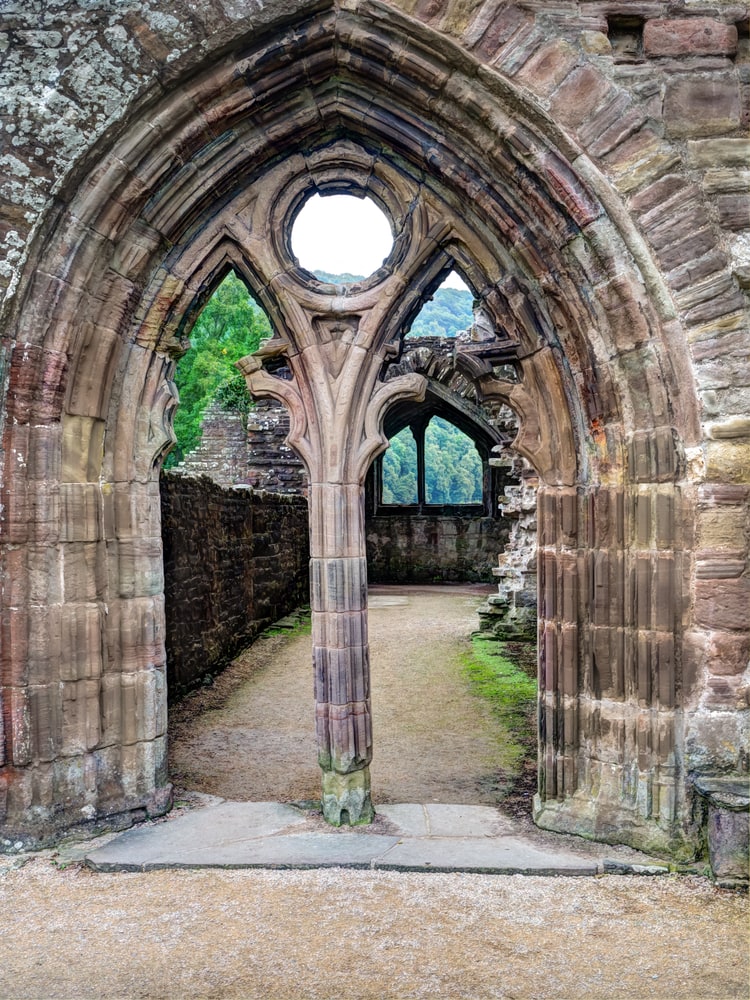
Tintern’s crowning glory was its great church, which rivals the Abbey of Rievaulx in Yorkshire which was built between 1269 and 1301.
Cardigan
Cardigan is the gateway to the superb Pembrokeshire coast National Park. This historic Welsh town on the River Teifi was the capital of the Welsh kingdom of Deheubarth. Its history began with the building of a Norman Castle and the town grew up around it.
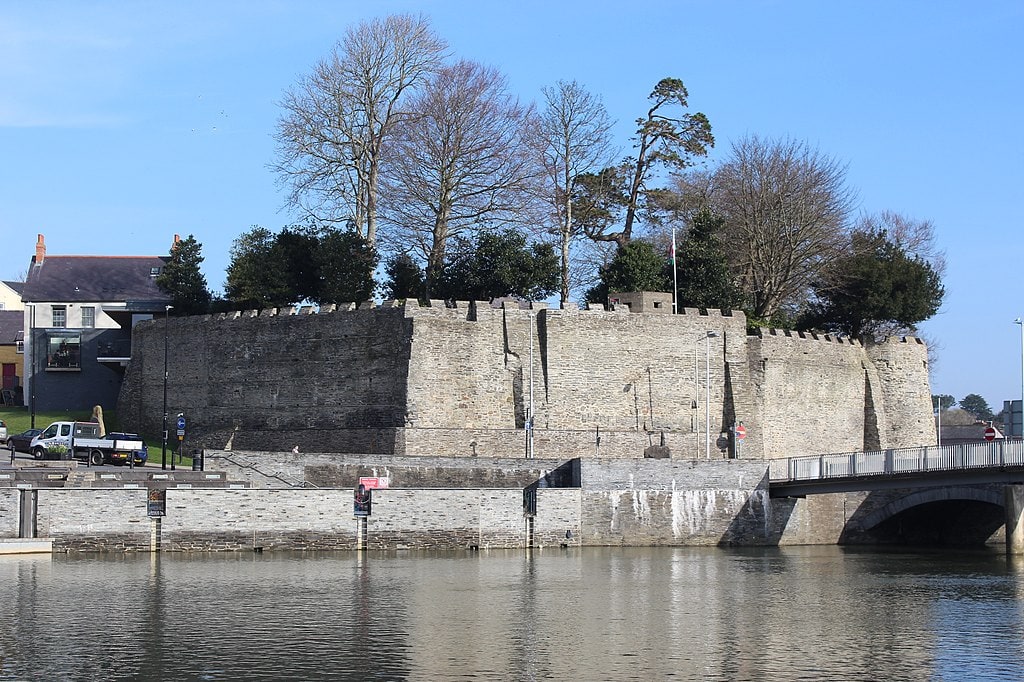
The very first Welsh eisteddfod was held in Cardigan in 1176, and it was held by Rhys ap Gruffydd of Deheubarth who held a festival of music and poetry in his court which became a tradition throughout Wales even into the modern day.
Just across the river from the Castle stands the ruins of St Dogmael’s Abbey. Entry to this beautiful Abbey is free and well-behaved dogs on leads are welcome. The Coach House Museum is also free to visit and houses many relics and artefacts from the Abbey grounds. The museum displays a chronological history of the Abbey’s fascinating and turbulent past.
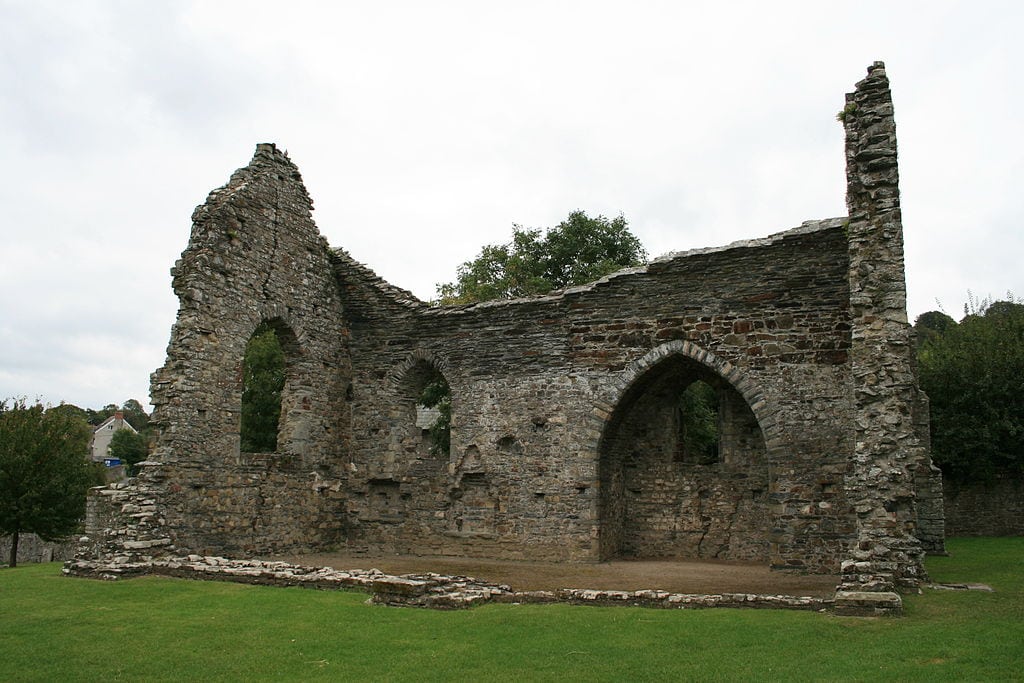
Carmarthen
According to the legends Merlin was born just outside Carmarthen on Bryn Myrddin a tree-covered hill where he was trapped by Vivien. The legends say that he was in love with her and taught her all his spells but after learning them she imprisoned him. The legends also said that an ancient oak stood at the corner of Oak Lane Priory Street and when it falls so will the town. Pieces of the oak can be seen in the town museum.
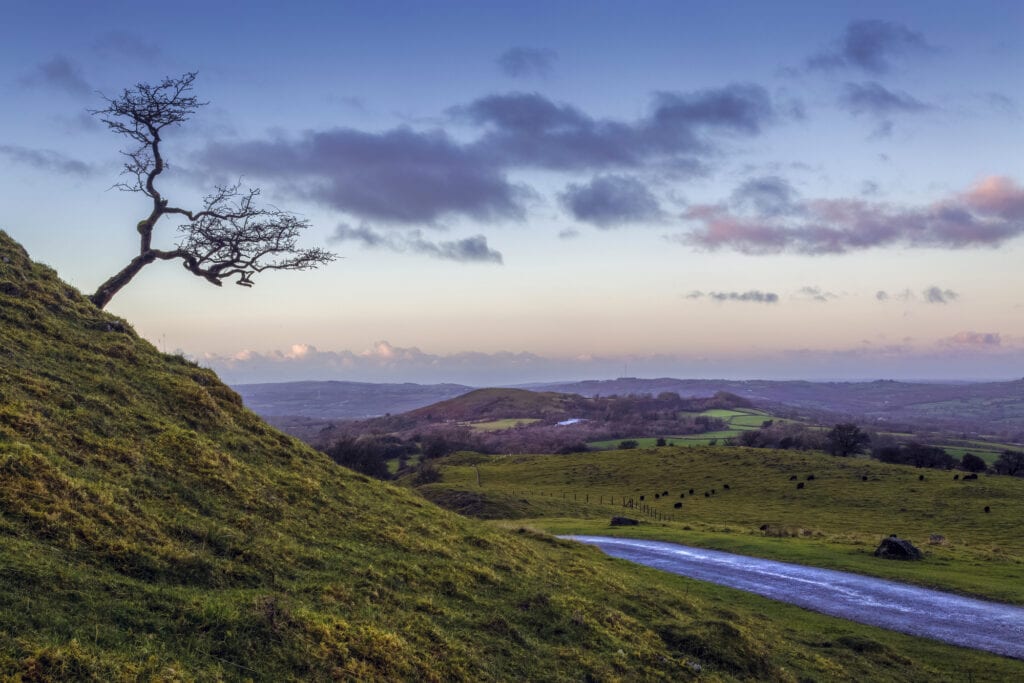
Carmarthen is believed to be the oldest town in Wales and the Castle is one of the most frequently invaded. Around 1094 the Normans built a castle here but it was destroyed in 1215 and rebuilt in 1223.
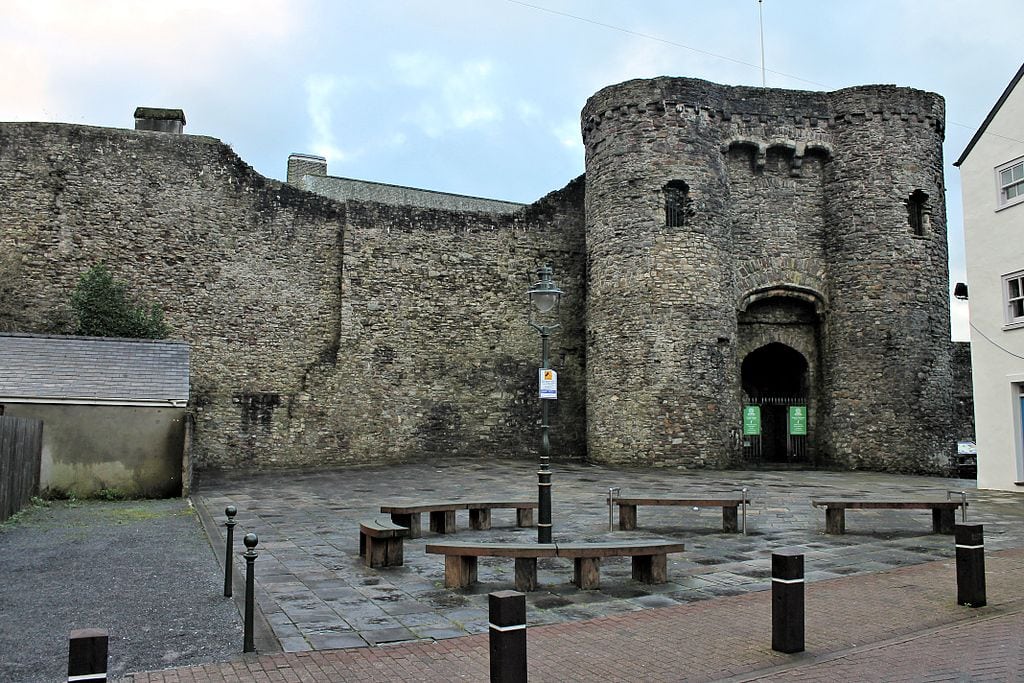
Rhys ap Gruffudd was one of the leading figures of 12th-century Wales. He owned Carmarthen until his surrender to King Henry II in 1158. But the collapse of the building, like many others in Britain, was associated with the outbreak of the English Civil War of the 1640s.
Cardiff
Cardiff is the capital of Wales and the heart of the city was formed during the medieval period many traces from this time survive today, especially close to the castle. The castle dates from the 11th century when the Normans conquered Glamorgan. It was begun by William the Conqueror on his return from St David’s in Pembrokeshire, in 1081.
Cardiff Castle was originally built in wood. In the 12th century, Robert Consol, Duke of Gloucester, rebuilt it in stone. At this time, the Castle’s west and south walls were raised, building upon the ruined walls of the Roman fort.
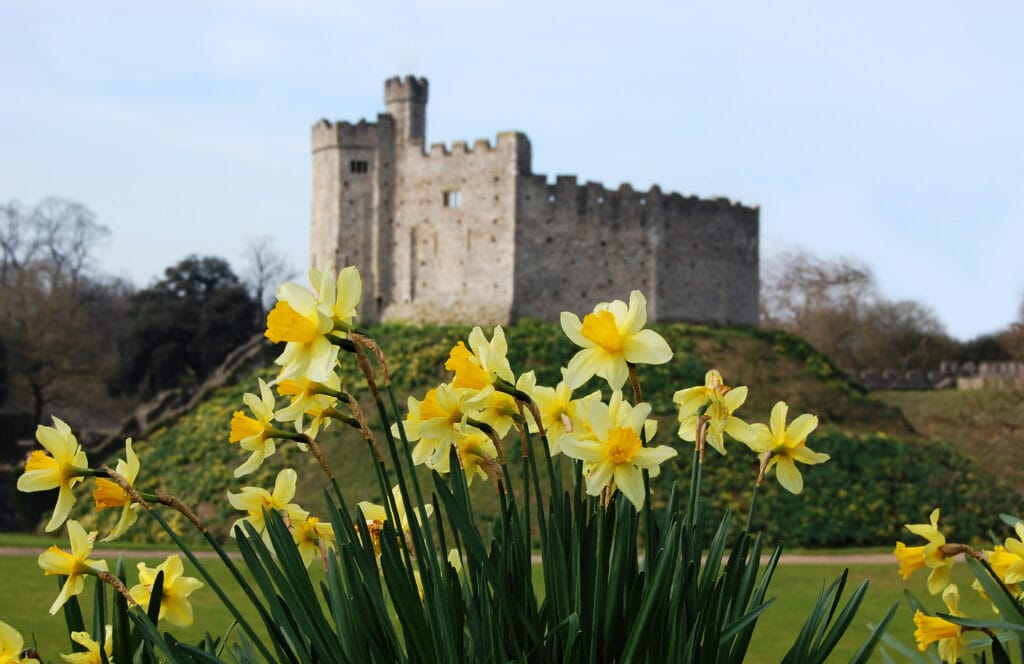
In the 15th century, the town was destroyed by Owain Glyndŵr’s Welsh army. The Castle lay in ruin until Richard Beauchamp, Earl of Warwick, restored the defences and castle buildings.
Laugharne
If you are visiting Carmarthenshire don’t forget to stop by the Dylan Thomas Castle House in Laugharne, Carmarthenshire. This is a Georgian mansion. Described by Dylan Thomas as “the best of houses in the best of places”, it is one of many buildings of note in the medieval township.
Laugharne castle was built in 1116 and was the meeting place of Henry II of England and Rhys ap Gruffudd where they agreed on a treaty of peace. When Henry II of England died in 1189 the castle, was seized by Rhys ap Gruffudd in the same year. The castle may have been burnt down at that time. It was rebuilt by the Normans, and in 1215 was captured by Llywelyn the Great in his campaign across South Wales. By 1247 the castle was destroyed by Llywellyn.
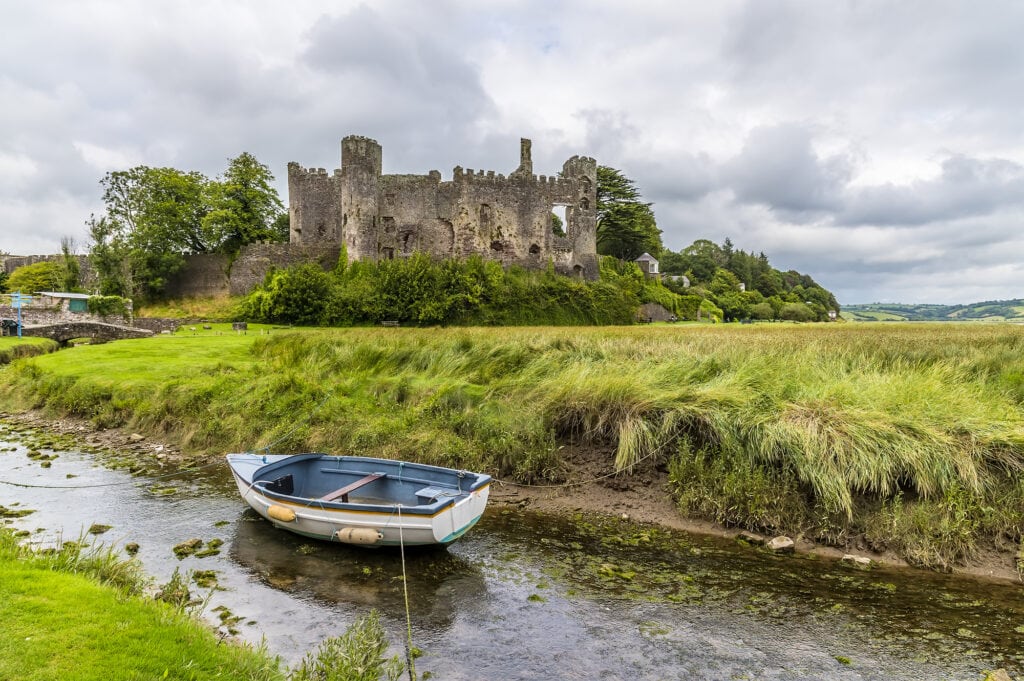
Caernarfon
Edward II was born here on April 25, 1284, There is a legend that Edward I had promised the Welsh nobility a prince “that was bourne in Wales and could speake never a wrod of English“, then named his newborn son the Prince of Wales.
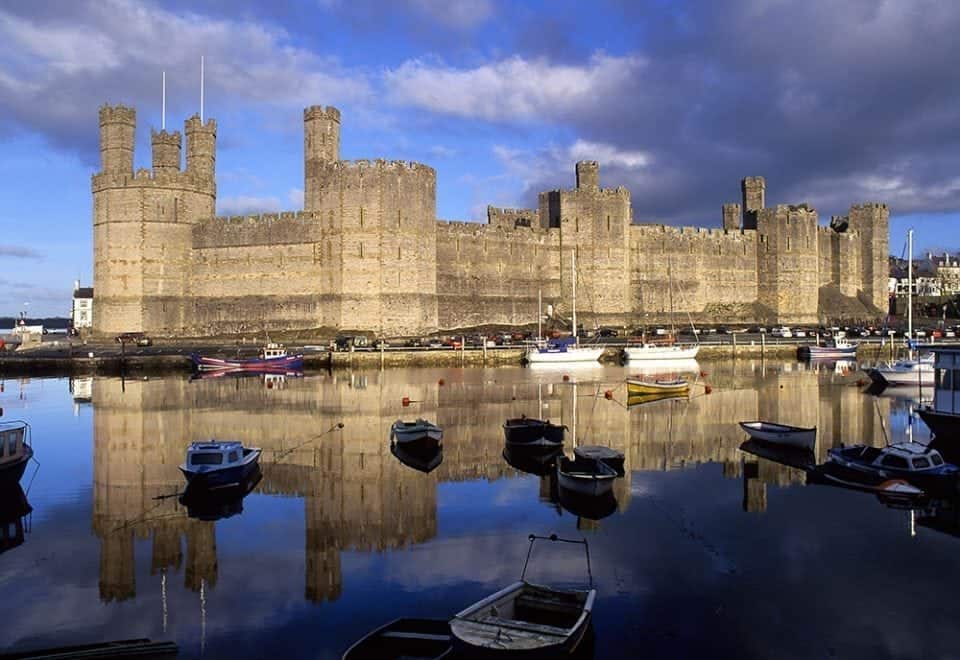
Caernarfon Castle is recognised around the world as one of the greatest buildings of the Middle Ages. This fortress-palace on the banks of the River Seiont is grouped with Edward I’s other castles at Conwy, Beaumaris and Harlech as a World Heritage Site.
Brecon
Brecon lies on the River Usk where it is joined by the Rivers Honddu and Tarell, in the northern portion of Brecon Beacons National Park. You will find a few parts of the ancient city walls built around 1100. Brecon was created by the Norman Lord Bernard de Neufmarché after he defeated the Welsh ruler Rhys Ap Tewdwer at the Battle of Brecon in 1093.
Brecon castle was built in a naturally defensive place at the crossing of the Usk and Honddu rivers, where it could guard the ferry and benefit from water mills. In the second half of the 12th century, the castle passed into the hands of the de Braose family, as a result of strategic marriages.
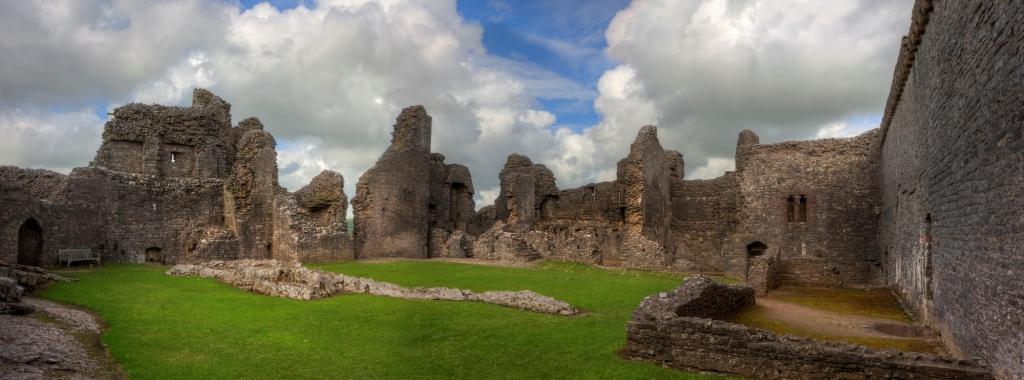
When they rebelled against the English King John, he conquered the castle in 1207. Brecon soon became the target of attacks by the Welsh of Llywelyn ap Iorwerth, who raided the castle and town in 1217, 1231 and 1233. During the latter, the town was burnt, but the castle managed to defend itself.
In the second half of the 13th century, Brecon was repeatedly attacked by the Welsh of Llywelyn ap Gruffydd, who for a short period managed to capture the castle in 1263 two years later, the castle was recaptured by Prince Edward, but in the same 1265, it was again conquered by the Welsh.
In 1322, the castle was taken over by King Edward in 1399 Henry of Lancaster took the English throne as Henry IV, and entrusted Brecon to Sir Thomas Berkeley who prepared Brecon for defence against the rebellious Welsh of Owain Glyndŵr.
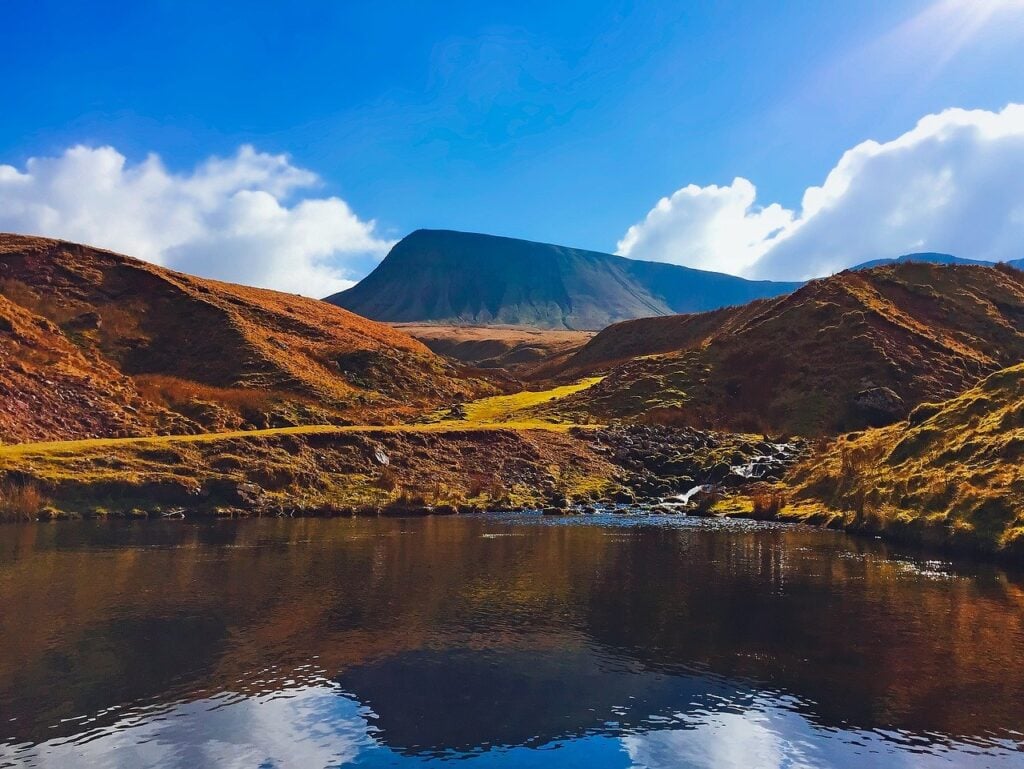
In the 15th century, Brecon passed to the Dukes of Stafford of Buckingham. The last of them were executed during the reign of Henry VIII Tudor, and the castle complex began to fall into ruin it was later dismantled by the Parliamentarians during the Civil War. The first repair works began in the 19th century, thanks to which the castle was transformed into a hotel.
The walls of Brecon were also destroyed by the war and only small areas survive near Plough Chapel and Watton Mount.
Chepstow
Chepstow Castle was first built c. 1067 by William FitzOsbern and then significantly improved c. 1190 CE by Sir William Marshal one of England’s greatest knights who served four kings and acted as regent for Henry III of England.
Chepstow Castle then became the home of a succession of rich and powerful medieval and Tudor nobles. Probably because of its formidable appearance, the castle was never attacked and today remains as a great example of military castles and can boast the oldest castle doors in Europe.
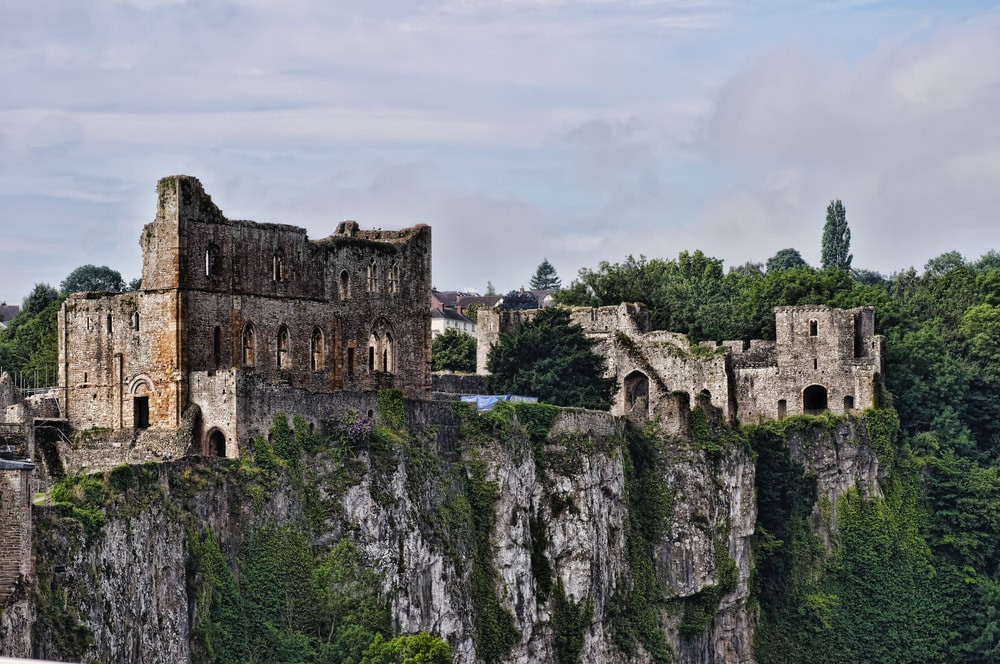
In the Middle Ages Chepstow was a town of great importance in the export and import trade due to its home on the harbour. wine was also imported by the town and the port has been continuously developed since those times.
Keeping up its reputation as an entertainment town Chepstow is Famous as the home of the Welsh National, which takes place each December and it’s also a popular venue for live music and entertainment.
Criccieth
Criccieth castle may have given Criccieth its name: ‘Crug Caeth’ means the jail on the hill. In the centre of the town lies Y Maes, part of the original medieval town common where fairs have been held for more than 700 years.
The castle was built in 1230 by Llywelyn ab Iorwerth (Llywelyn the Great) and in 1282 it became part of a ring of castles surrounded by Edward I’s conquered territories. In 1294, Madog ap Llewelyn led an uprising from native Welsh people angry against English rule. Criccieth was besieged for several months.
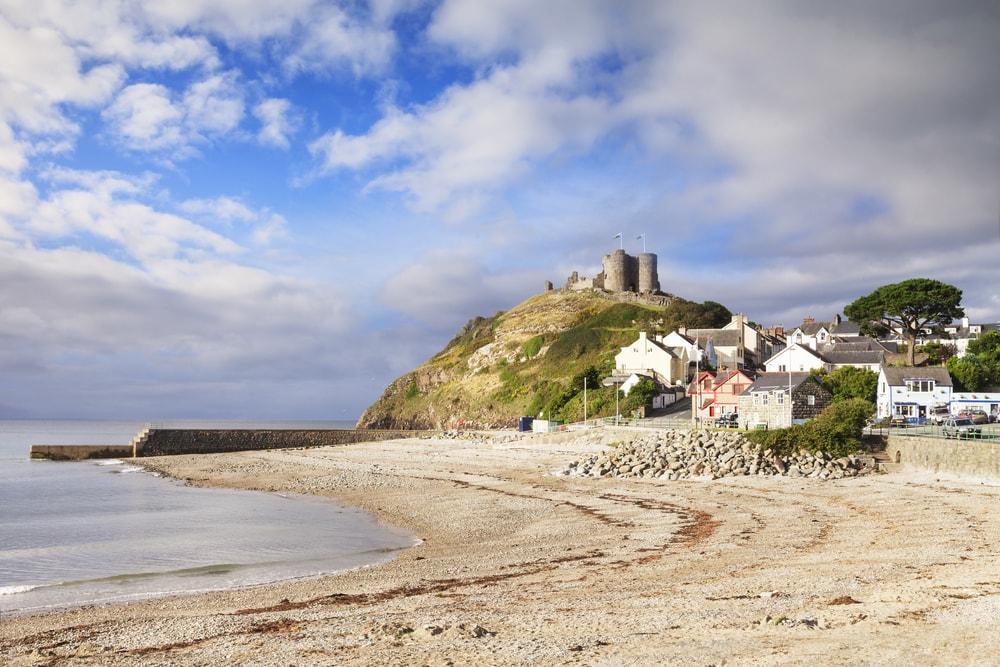
Much later, Edward, I took control of Criccieth Castle, which eventually led to the Welsh residents of the area revolting against this. Just over 100 years later in 1404, the castle was completely sacked and was never reoccupied. An exhibition on the Princes of Gwynedd can be found within the castle.
Since Victorian times the town has developed into a seaside destination where you can enjoy walks on the beach, rock pooling, water sports, fabulous fish and chips and icecream.
There’s even a traditional Welsh clog maker who still has his workshop in the town. The town sits on the Wales coast path, and there are plenty of quiet trails running out of the town for walking and cycling.
Conwy
Conwy is the most complete medieval walled town in Britain with a magnificent medieval fortress towering over the town for over 700 years. Climb to the top of one of Conwy Castle’s eight towers to get a stunning view over Conwy and the surrounding area. You can explore the inner and outer wards with their many rooms and the castle walls with their 21 towers that completely enclose Conwy town.
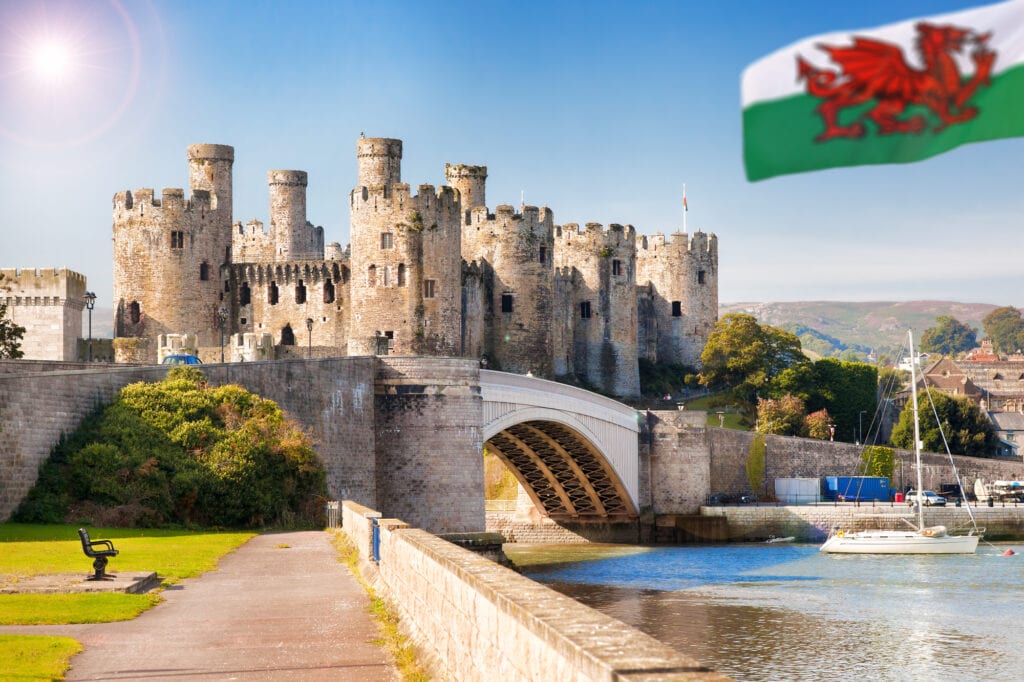
Conwy Castle was built by Edward I to protect and maintain, along with several other castles, his newly acquired dominance in the region. Conwy Castle is listed by UNESCO as a World Heritage Site.
The ruins of Aberconwy Abbey can be found at St. Mary and All Saint’s Church. The abbey was also the burial place of Llywelyn ap Iorworth, (Llywelyn the Great) and was the burial place of many of the native Princes of Gwynedd, including Gruffydd ap Cynan, and Llewelyn ap Maelgwyn. Llywelyn’s son and successor Dafydd ap Llywelyn were also buried there in 1246. Llywelyn’s other son, Gruffydd ap Llywelyn, died trying to escape from captivity in the Tower of London in 1244, his body was later repatriated and interred at the Abbey.
In Conwy you can also visit the oldest townhouse in Wales Aberconwy House dates to the early 14th century, making it the oldest recorded dwelling house in Wales. Two other houses to visit include Plas Mawr or the Great Hall, which is quite simply the finest surviving Elizabethan townhouse anywhere in Britain.
The Smallest House in Britain can be found at the end of a terrace of houses on Conwy’s quayside. The house is just 72 inches wide by 122 inches high. It was occupied right up until May 1900.
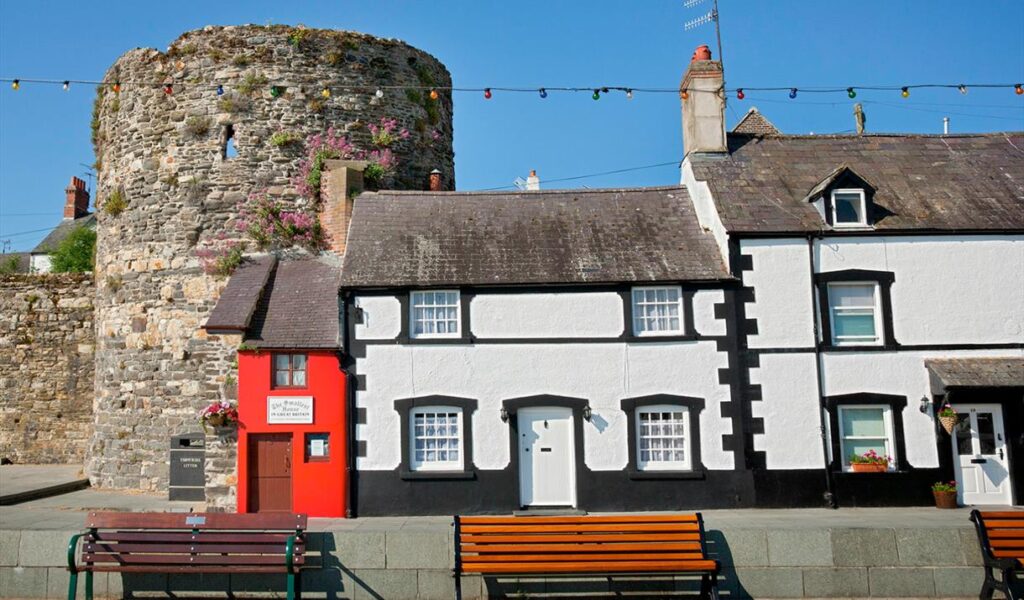
Denbigh
Denbigh castle is situated on the south side of the town high on a hill originally a wooden motte and bailey it was rebuilt by the English in stone. It was granted to Dafydd ap Gruffydd by Edward I after Dafydd assisted the English king put down a Welsh rebellion in 1277.
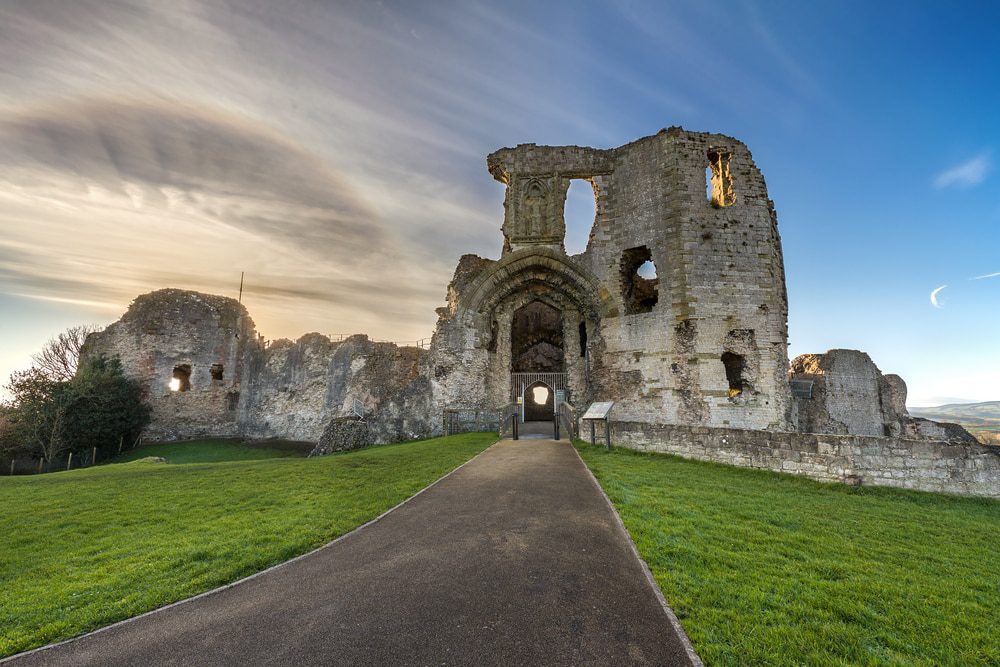
Construction of the castle and the town’s outer wall was interrupted when the town was attacked by the Welsh in 1294 and possibly captured. The main feature of the castle is the gatehouse which consists of three towers. In medieval times the houses were contained within the town walls on the hill but due to its steepness these houses were abandoned and the town was relocated to the valley floor below.
Within Denbigh’s walls lays the ruins of Leicester’s Church built by Robert Dudley. It was Elizabeth I who gave the castle to him and he began building the Church for Protestant worship. However, the money ran out and the church was never finished.
Flint
Flint lies on the estuary of the River Dee and is home to the first castle built by Edward I in 1277 which was to be his “Iron Ring” of fortresses across Wales. Both castle and town were attacked by the forces of Madog ap Llywelyn during the revolt of 1294-5; the defenders of the town burnt it in order to deny its use to the Welsh.
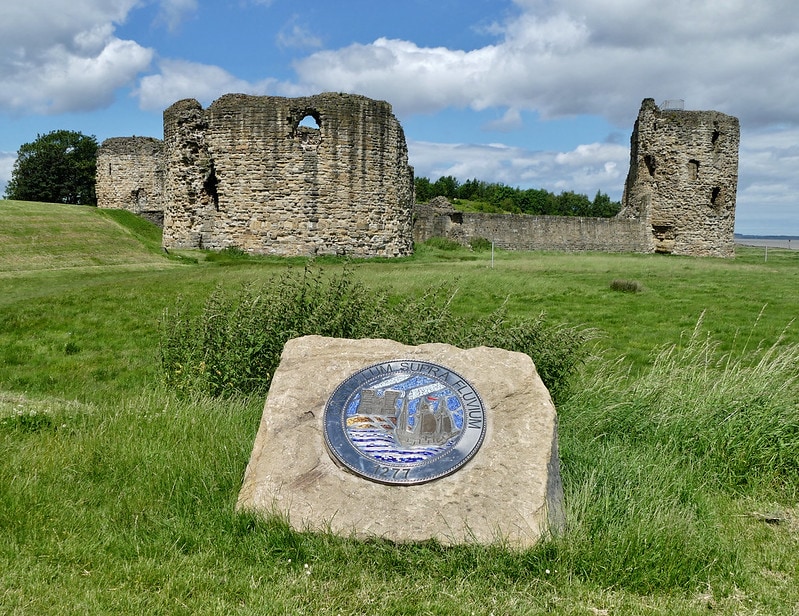
Flint was the setting of another turning point in history this is where King Richard II came face to face with his rival to the crown Henry Bolingbroke. Flint Castle, is famous for featuring in Shakespeare’s play Richard II. The castle is where Richard II is captured.
Hope and Caergwrle
Hope and Caergwrle have had a turbulent past due to their location on the border of Wales and England. Successive waves of invaders from England sought to take Welsh lands and ownership of the settlements changed several times.
Caergwrle Castle Hill and Caer Estyn provided excellent defensive positions. In the late 13th century, Llywelyn ap Gruffydd, Prince of Wales, refused to pay homage to the new English ruler, King Edward I. In retaliation, Edward invaded Wales in 1276 and forced Llywelyn to retreat into Snowdonia. Llywelyn’s younger brother, Dafydd, joined forces with Edward as he felt Llywelyn had cheated him of his inheritance.
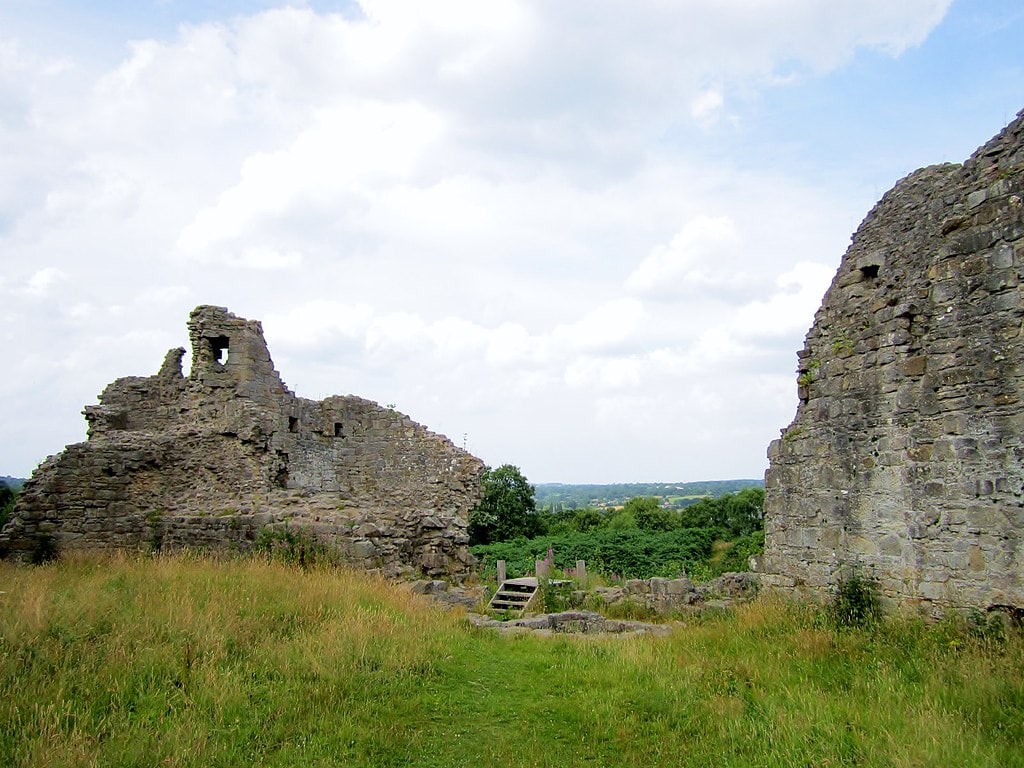
As a reward, Edward gave Dafydd the rich lands around Caergwrle and Hope and, in 1277, Dafydd began to build his castle at Caergwrle. However, Dafydd felt unfairly treated when English lords were given more power and, five years later, he changed sides and fought against the English invaders.
Llywelyn was killed in battle but Dafydd was captured. In retribution for his defection, he was convicted of high treason and was the first person in England to be hung, drawn and quartered for that crime.
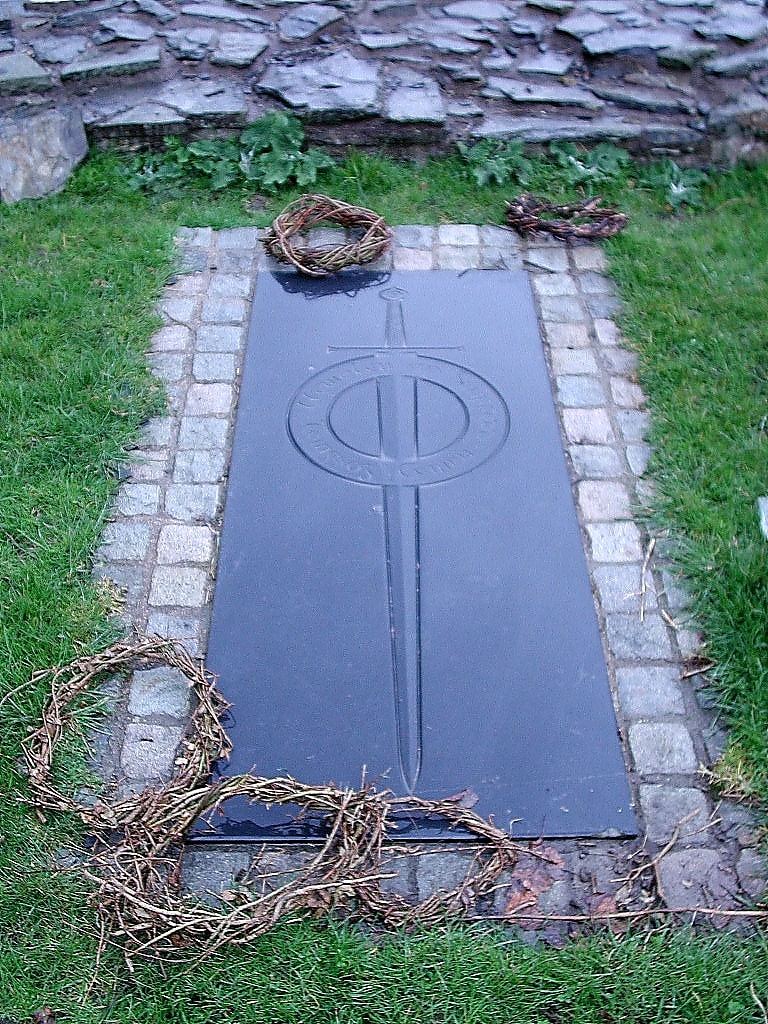
Caergwrle Castle didn’t fare much better. Edward began to rebuild it but, a year later, a fire ripped through the wooden parts of the castle and the work was abandoned.
In 1400 Owain Glyndŵr rebelled and proclaimed himself Prince of Wales, and by 1403 he had infiltrated Flintshire, urging revolt. The local Welsh flocked to join his forces and burned the English settlement of Hope. Gradually, King Henry IV’s armies regained control.
Harlech
None of Edward I’s mighty coastal fortresses has a more spectacular setting than Harlech Castle set on a sheer rocky cliff overlooking the sea. In Snowdonia National Park the peaks of Snowdonia rise in the back and the Castle is part of the UNESCO World Heritage Site.
Harlech was completed from ground to battlements in just seven years its classic ‘walls within walls’ design makes the most of daunting natural defences.
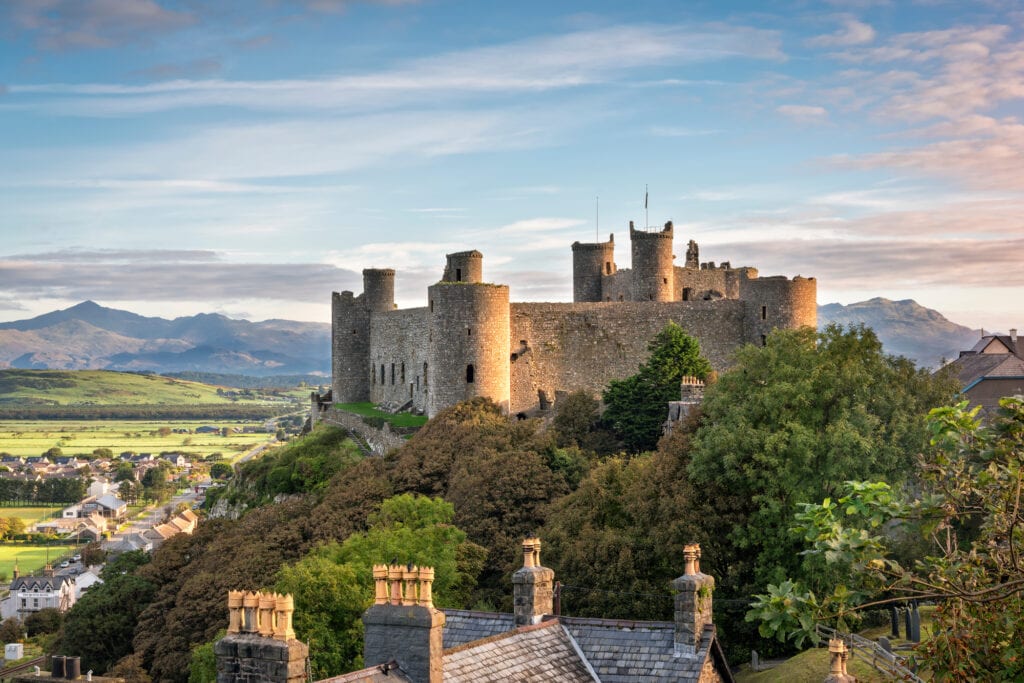
In 1294 the rebellion of Madog ap Llewelyn (a distant cousin of Llywelyn the Great) took place against Edward 1 (Longshanks) the castle held out – thanks to the ‘Way from the Sea’. This path of 108 steps rising steeply up the rock face allowed castle defenders access to food and water brought to the steps by ships.
During the 15th-century Wars of the Roses, Harlech was held by the Lancastrians for seven years, before Yorkist troops forced its surrender in 1468, a siege memorialised in the song “Men of Harlech”. Following the outbreak of the English Civil War in 1642, the castle was held by forces loyal to Charles I.
UNESCO considers Harlech, along with Beaumaris, Conwy, and Caernarfon, to be one of “the finest examples of late 13th-century and early 14th-century military architecture in Europe”, and it is classed as a World Heritage Site. In 2015 a new footbridge was installed which links a new visitor centre in the refurbished Castle Hotel, opposite the castle, replacing long flights of timber steps. It occupies the position of the castle’s original drawbridge.
A 1000-year-old road in Harlech, Ffordd Pen Llech was recognized by the Guinness World Records in 2019 as the steepest residential street in the world with a gradient of 1:2.67 (37.45%).
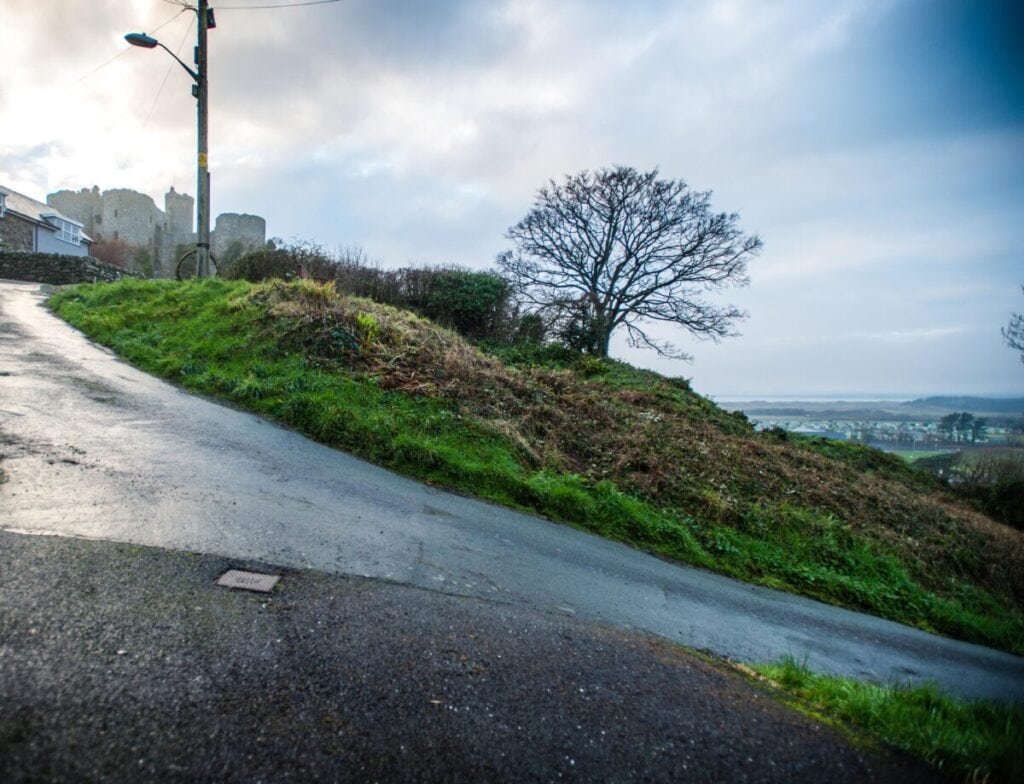
The Lockheed P-38 Lightning, nicknamed the Maid of Harlech, crashed on a Harlech beach in September 1942 when its pilot, Second Lt Robert Elliott, 24, of North Carolina, got into difficulties during a training exercise. The aircraft is one of the only known aircraft of its type still surviving substantially intact and is of international significance.
While the exact location of the Lockheed P-38 Lightning fighter aircraft remains confidential, to protect the plane, it remains there today.
Llanrwst
Llanrwst is a pretty, hidden gem in Wales and it’s most well-known for the picturesque Ty Hwnt i’r Bont tea room which you have probably seen on Instagram, and the nearby three-arched stone bridge said to be built by Inigo Jones.
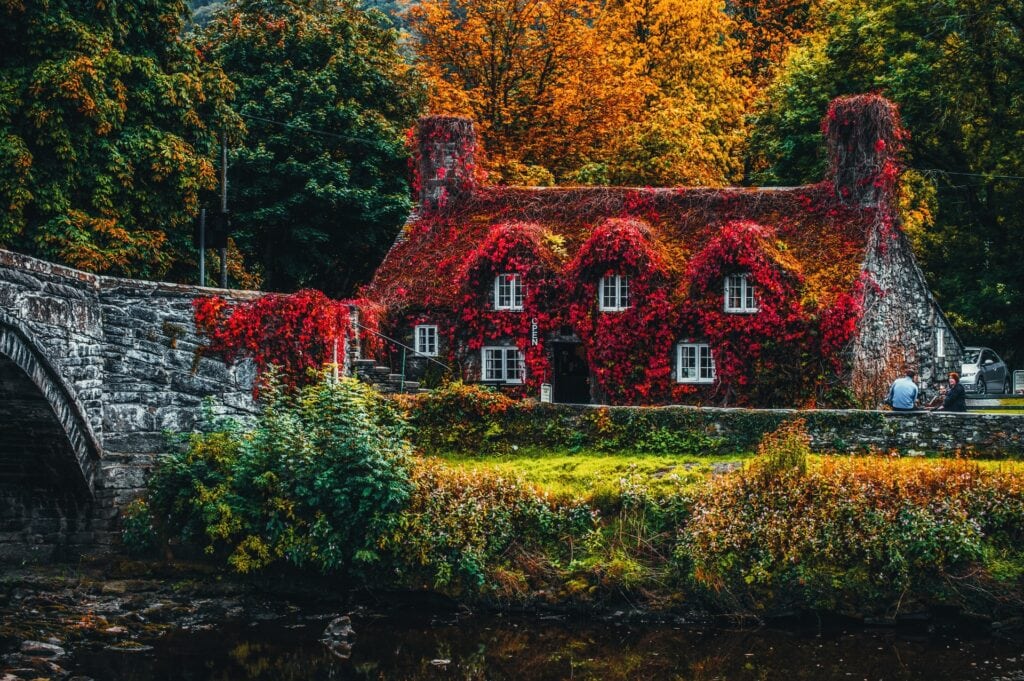
In the middle of the town is the Parish Church of St Grwst which is home to a stone coffin that is said to be the tomb of Llywelyn The Great. Then check out the nearby almshouses before heading out of town to Gwydir Castle (open seasonally), a 16th Century Tudor courtyard house built for the powerful Wynn family. While there, ask for the key to the nearby Gwydir Uchaf Chapel. This was the castle’s private chapel and inside you will find a beautifully painted interior.
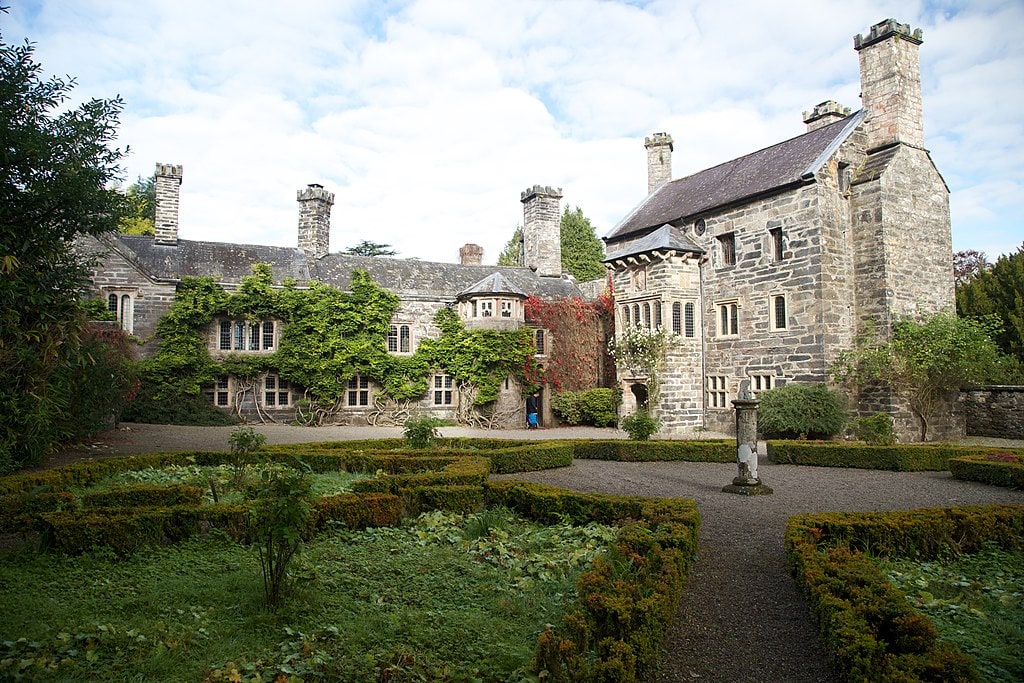
Gwydir Castle is an ancient Welsh house regarded as one of the finest Tudor houses in Wales, the castle was formerly the ancestral home of the powerful Wynn family. By 1994 the house and its surrounding grounds had become derelict, it’s taken a monumental 20-year effort to restore the property by the current owners to get it to where it is today, with works still ongoing to fully restore it to its former glory.
Machynlleth
Machynlleth is truly a gem – a rural market town with a quirky, eco-friendly vibe nestled within the beautiful UNESCO Dyfi Biosphere. There are loads to do and see just wandering around. There are plenty of antique stores, alternative lifestyle shops and galleries featuring local artists and craftspeople. There’s a bustling market on Wednesdays and even an annual world-famous comedy festival.
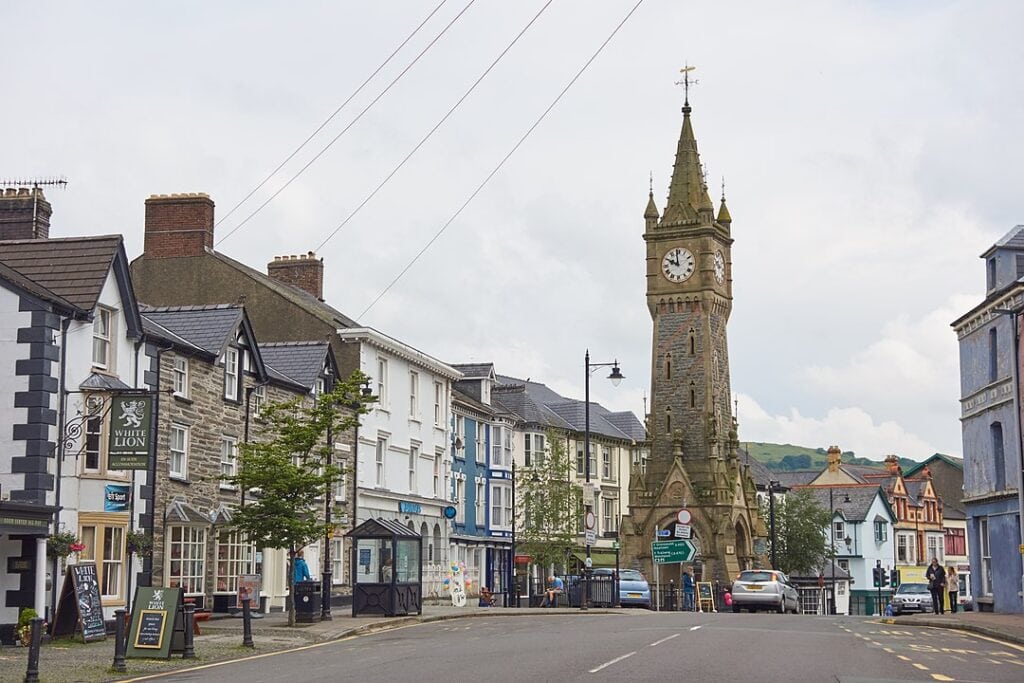
On Heol Maengyn which is the high street, there is a splendid Victorian clock tower, and on Wednesdays, the market (which was launched by Royal Charter in 1291) continues to this day. It was also the site of national hero Owain Glyndŵr’s 1404 parliament – the original Senedd. The Owain Glyndŵr Centre is the local history museum that tells his story.
Other attractions include Y Plas (The Mansion); a house and gardens formerly owned by the family of the Marquess of Londonderry, which was given to the people of Machynlleth in 1948.
Newcastle Emlyn
Newcastle Emlyn in Carmarthenshire is a town on the River Teifi, known for its 13th-century ruined castle, set on high ground in a loop of the river. According to legend, the castle was the home of the last dragon in Wales. The historic town centre is a conservation area, with a wealth of interesting old buildings.
Founded around 1240 by the Welsh Prince, Maredudd ap Rhys, Newcastle Emlyn castle is unique in that very few Welsh-built stone castles can be found in West Wales. Following a series of attacks and refurbishments over the following centuries, the castle was finally blown up with gunpowder in 1645 during the English Civil war.
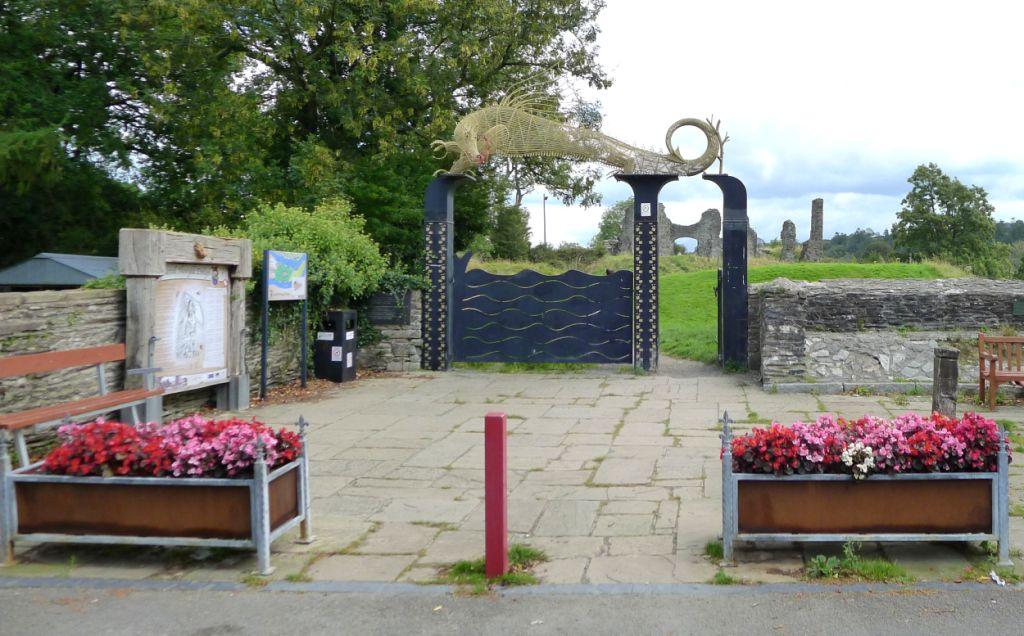
The dragon gates at the castle are inspired by the legend which tells that the last Dragon in Wales was killed there. During a town fair when the town was full of people, a Wyvern (a fierce winged creature) breathing fire and smoke landed on the castle walls and settled down to sleep. Its appearance in the castle at first brought terror to all but, after the fear had died down, a few brave townsfolk sought to destroy the fearsome monster.
A soldier approached the dragon from the river Teifi and floated a red cloak in the river. The dragon awoke, saw the cloak and went to attack it but was shot at by the soldier. The wyvern, in its death throes, floated down the river. The legend tells of the great joy of the townsfolk when they saw the monster dead. Today, the legend of the last dragon In Wales is kept alive in the sculptures and plaques that sit within the dramatic castle ruins.
Pembroke
Pembroke was founded by Henry II and is the home of Pembroke Castle, a superb medieval fortress and the birthplace of Henry Tudor, later to become King Henry VII.
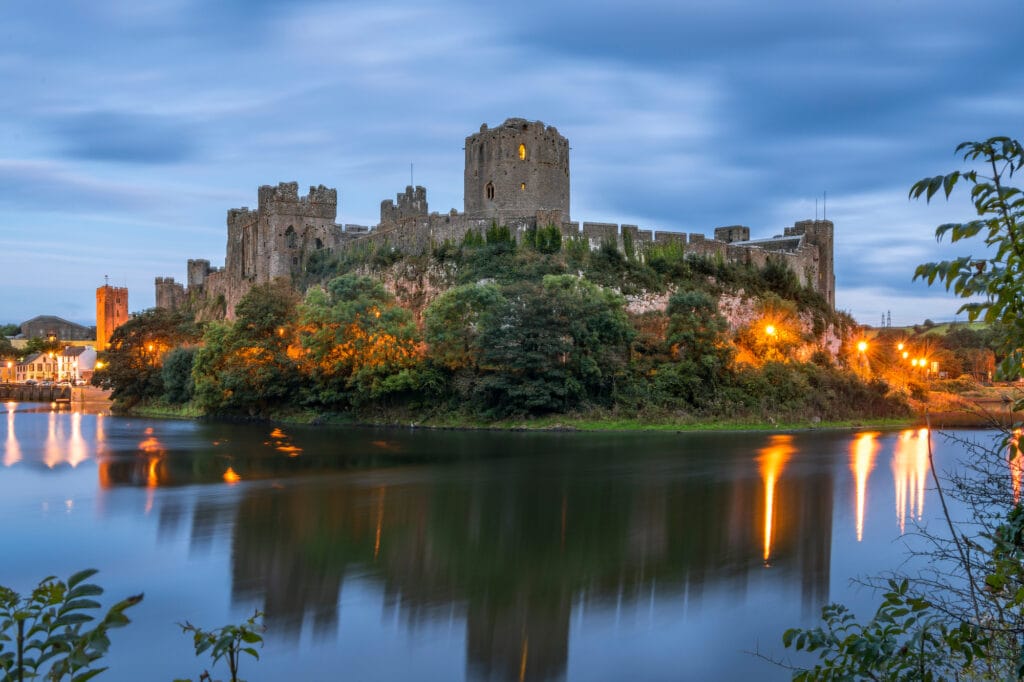
In addition to the castle, Pembroke features three medieval churches and the remains of the medieval town walls. The street’s layout follows a layout which is nearly 1,000 years old and a track of some sort was probably laid out 1,000 years before that. Beneath the castle, is a vast cavern called The Wogan which has been used for the past 12,000 years, if not continuously.
During the Wars of the Roses, town & castle wavered in support of warring Lancastrian & Yorkist factions. In 1447 Jasper Tudor (half-brother to Henry IV) was appointed Earl of Pembroke and into his care was sent the young Margaret Beaufort, wife of his brother Edmund. She gave birth to a son in Pembroke Castle, a son destined to become Henry VII and the founder of the Tudor dynasty. Edmund died two months before the birth of their son Henry.
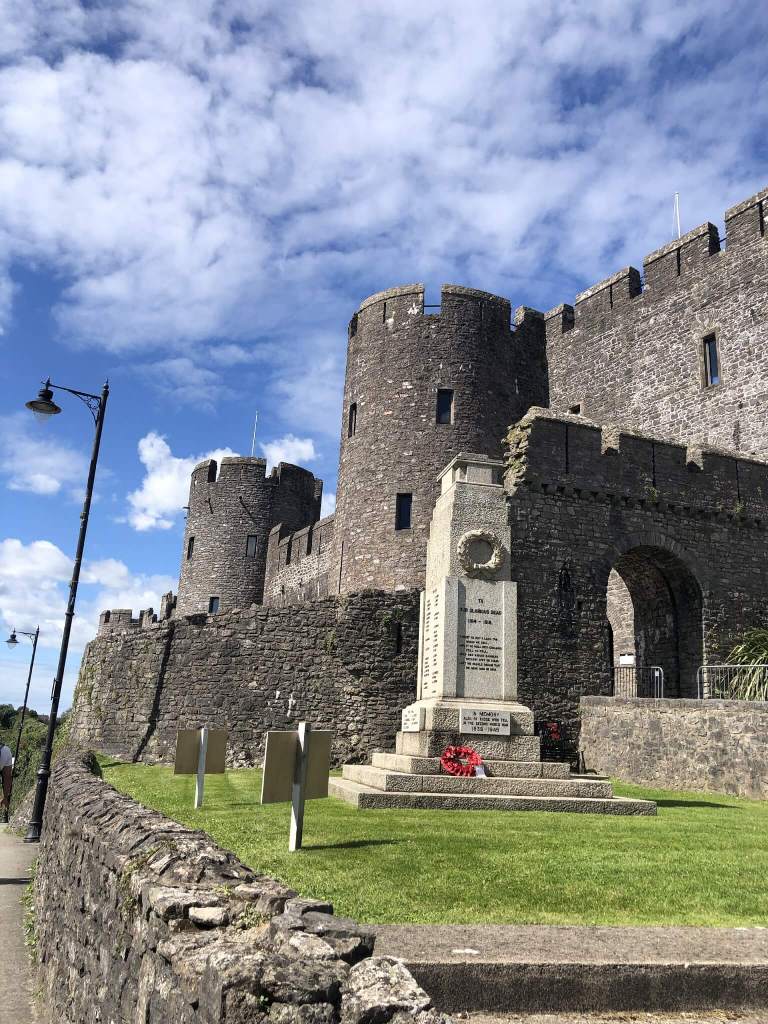
One of three medieval churches in Pembroke, St Mary’s dates to the late 12th century. By the entrance is a Tudor bench commemorating the birth of Henry VII (Henry Tudor) at the nearby castle in 1457. The second of Pembroke’s medieval churches, St Michael’s was built in the Norman period, rebuilt in 1835, and rebuilt again in 1887. Unfortunately, the church was forced to close in 2013.
The best place to see the medieval town walls of Pembroke is on Common Road. Here you can also see the ruins of lime kilns, used to process lime for fertilizer and mortar. Built into the town walls is the Gun Tower (also known as the Defending Tower). This was one of six flanking towers that gave defenders a good view along the line of the wall.
Ruthin
Ruthin is a Welsh hidden gem in North Wales where you can find the oldest timber townhouse in the country Nantclwyd y Dre. The house was started in 1435 and has been added to, updated and upgraded throughout the centuries.
Nantclwyd y Dre seven rooms have been restored and here you can see the various periods of the history of the building. There is also a fully restored garden known as the Lord’s Garden.
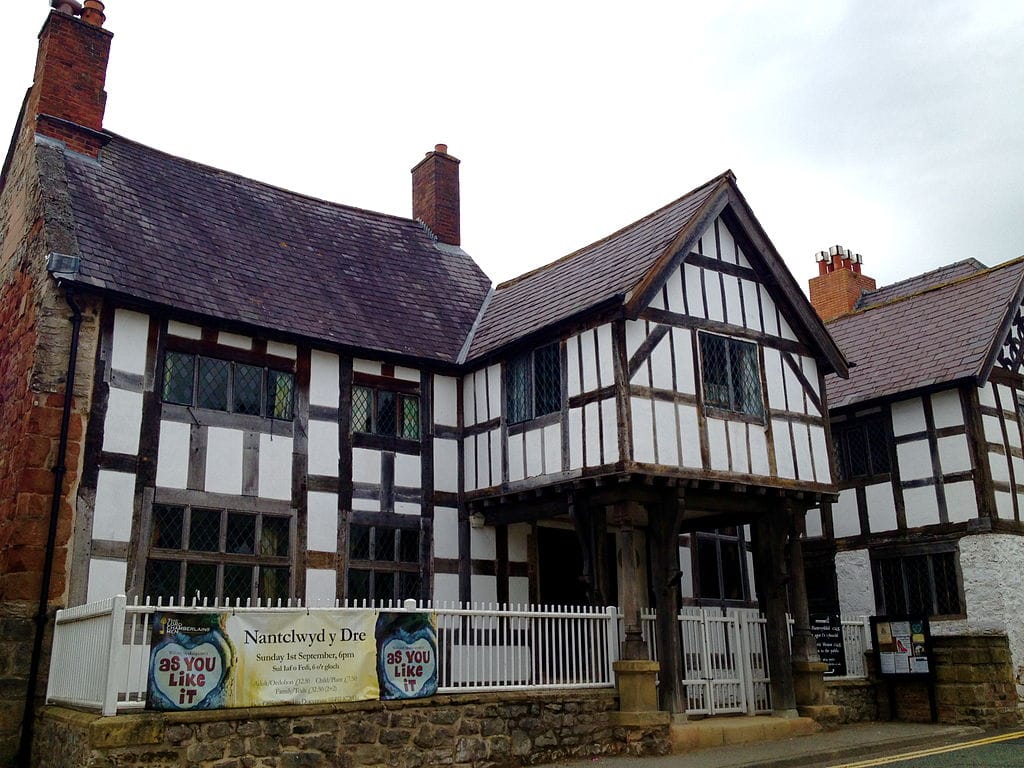
Ruthin’s other architectural gems include the multi-dormered tiled roof of the former Myddelton Arms (known as the Eyes of Ruthin) which dates from the mid-16th century and is of Flemish design.
When walking the town centre keep your eyes peeled for the Maen Huail, a limestone block in Ruthin’s town centre. Elis Gruffydd (1490-1552) recorded it as the very stone on which King Arthur beheaded the young warrior Huail, who made the fatal error of raiding his lands, stealing his mistress, and mocking him for a slight limp which Huail himself had inflicted.
Ruthin Castle is built on a red sandstone ridge 100 feet above the Vale of Clwyd, overlooking a strategic river crossing. Judging by the curving moat to the west of the upper bailey, the earliest castle here may have been a motte and bailey. However, the first documented castle was given to Prince Dafydd ap Gruffydd by King Edward in 1277.
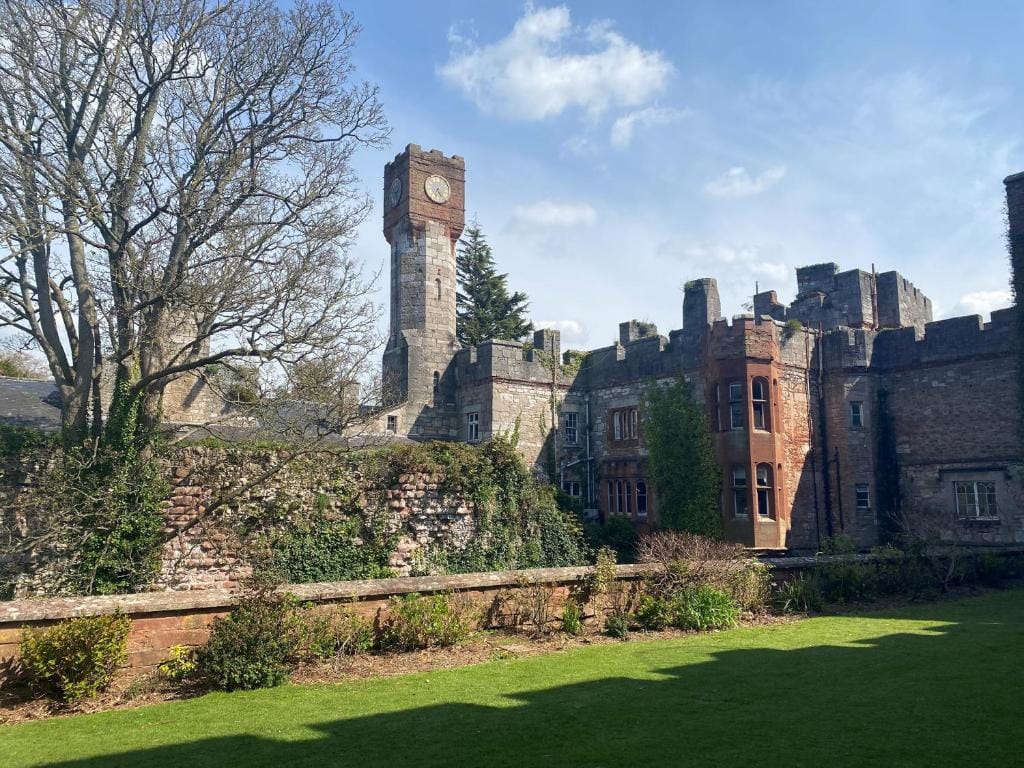
Near Ruthin Castle, you will find a sign for Lady Grey’s grave – the wife of the second in command at the castle when it was a fortress inhabited by the armies of Edward I.
Lady Grey was said to have been executed after killing her husband’s lover with an axe in a jealous rage. The local priests wouldn’t allow her to be buried on consecrated grounds so she had to be buried outside the castle walls. There are reports of the apparition of a crazed woman walking through the banquet hall and the battlements wielding an axe as she moves through the grounds and outside the castle walls.
In the early 1960s, Ruthin Castle was purchased at an auction & converted into a hotel. One of its most notable guests since was HM King Charles III who stayed on his way to his investiture as Prince of Wales in 1969.
Caldey Island
Caldey Island has a history from the 6th century when St Pyro established a monastery here. The monastery was reestablished in the 12th century, and again in the early 20th century. A small island off the Pembrokeshire coast is not the place you would expect to find three historic churches, a ruined medieval priory, a Tudor dovecote, a Catholic monastery, and, perhaps most unusual of all, a chocolate factory. But Caldey Island is no ordinary place.
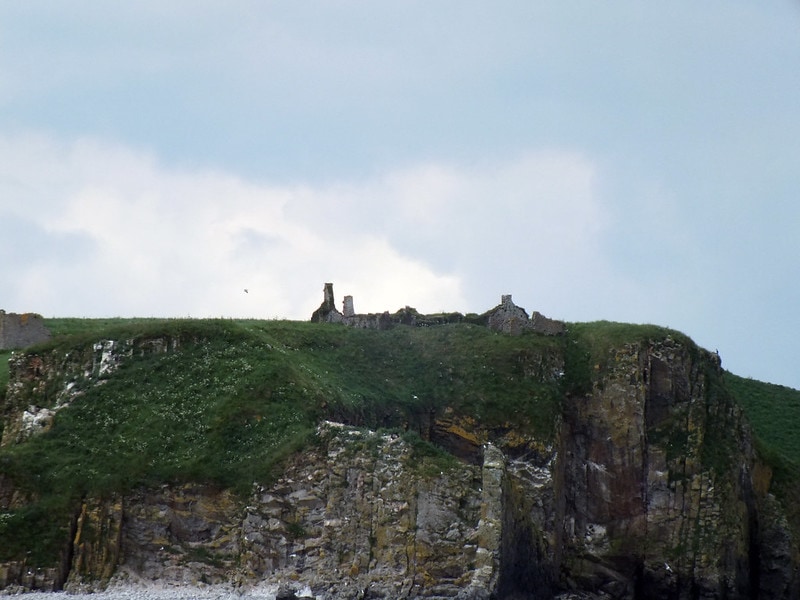
The island site proved easy prey for Viking raiders, and the monks left but returned in the 12th century when the Normans conquered Southern Wales. The Norman lord of Wales was Robert Fitzmartin, who gave Caldey to his mother Geva. Around the year 1131 Geva founded a new monastery of monks following the Tironian rule, as a daughter house of St Dogmael’s Abbey near Cardigan. The new Caldey Priory was a poor place, able to support only a few monks. Indeed, when Henry VIII’s commissioners came to dissolve the Priory they found only one monk in residence.
St Illtud’s Church, built in the 13th century is near the Priory ruins and its sanctuary floor is made of pebbles gathered from the beach, polished smooth by the passage of feet over centuries. Outside the sanctuary is a 6th-century Ogham stone, bearing inscriptions in both Latin and the ancient Ogham script.
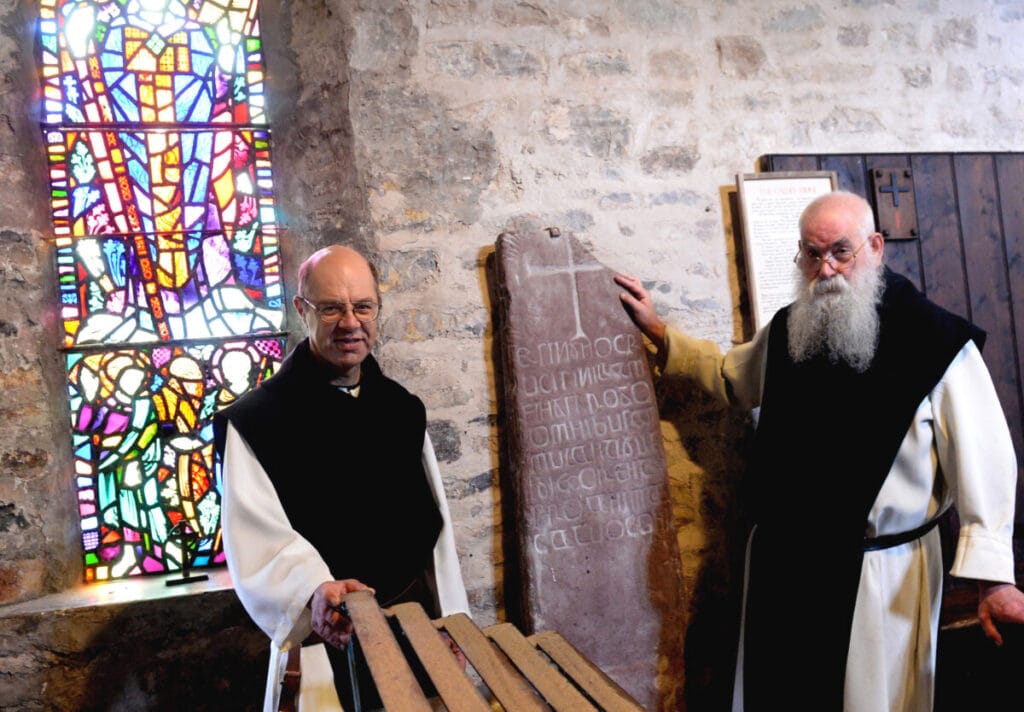
The Caldey Ogham stone was discovered buried in the Priory grounds in the 19th century and was used for a time as a garden seat before being placed for safekeeping inside the church. The Ogham inscription commemorates a servant of Dubricius, which may refer to St Pyro, who was himself a follower of St Dubricius. The Latin text is later, carved in the 8th century and commemorates a man named Catuocunus.
The Watchtower is a cylindrical building beneath a conical roof. It was probably used as a coastal lookout station, as was a similar tower at Penally, on the mainland. It dates to at least the 15th century, with one historian suggesting a Norman date of construction based on the very thick walls. It was probably used as a lookout tower.
Cosmeston Medieval Village
Cosmeston Medieval Village is one of the Vale of Glamorgan’s leading tourist attractions. The Village is set in the year 1350, a turbulent period in the history of the Welsh and English. The remains of the community were discovered and excavated during the 1980s by a team of archaeologists, and the local authority decided that this was a unique opportunity to bring to life part of the history of Wales.
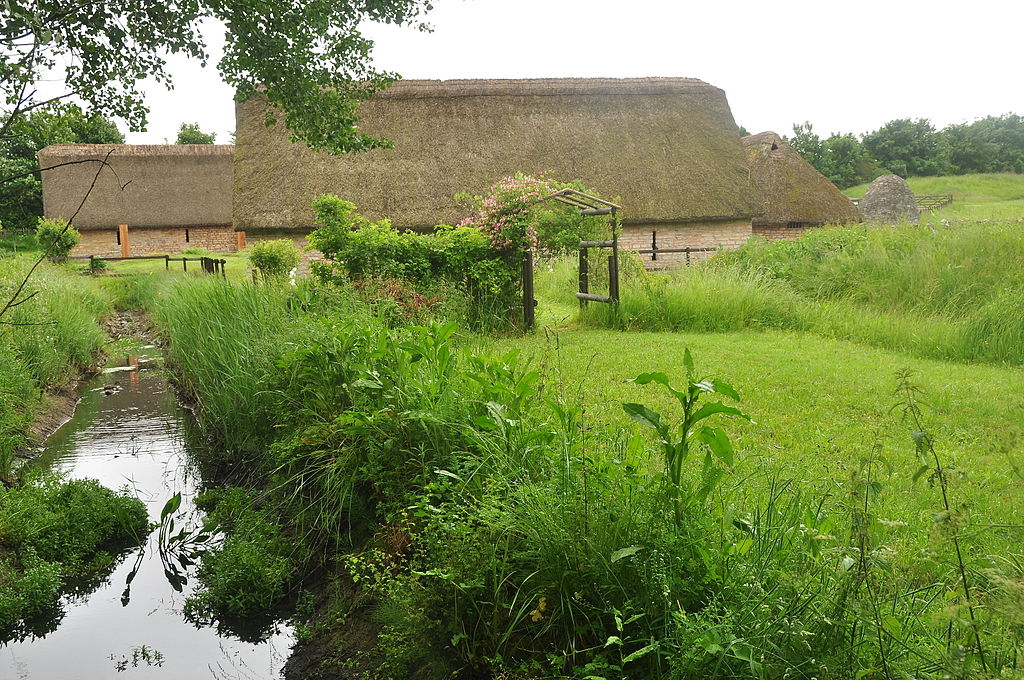
A programme of reconstruction allows visitors to see excavated buildings and gardens recreated, while livestock of the middle ages is cared for by “villagers” in authentic costume. There is an opportunity to experience medieval life by taking a tour of the village with a costumed guide or you can take a self-guided tour using the portable audio system.
Pontcysyllte Aqueduct
UNESCO has described this world heritage site as “a masterpiece of creative genius”. Built and planned in the 1700s the Aqueduct is incredibly impressive and spans 18 km. It may not be medieval but it is of great historical importance.
It was built by Thomas Telford and William Jessop and completed in 1805. Cast Iron was used for the trough, while the pillars are made of brick. The aqueduct carries the Llangollen Canal over the valley of the River Dee in northeast Wales.
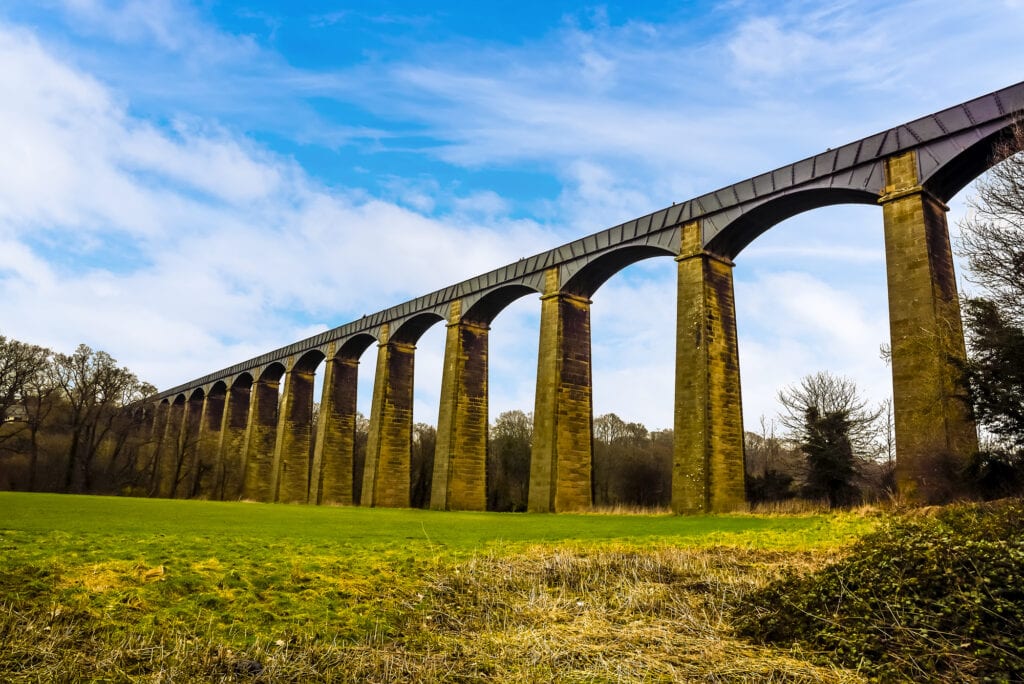
The whole length of the site has also been designated a Scheduled Ancient Monument of National Importance, and an Area of Outstanding Natural Beauty.
Rugby
You simply can’t leave Wales without experiencing the national Sport Rugby. Rugby is Wales’ national sport and it helped to create Welsh nationhood. Rugby union is the national sport of Wales and is a great influence on Welsh culture. Try and get tickets to the Principality Stadium in Cardiff to experience Rugby international weekends and enjoy some real Welsh partying.

All these historic towns in Wales are fascinating places to visit and there are just so many captivating historical sites to see and discover. I love to know which ones you have been to and enjoyed the most.
You might also like to read.
27 Awe-inspiring things to do in Wales
25 Traditional Welsh food dishes
North Wales Coastal Path the famous Pilgrim’s Way Route
7 of the most beautiful beaches on the Pembrokeshire Coast Wales
